





These pages continue to grow. More and more honest research, information and pictures are coming to the light. Thanks to everyone who has contributed pictures and information! I leave you with a quote by one of the greatest soldiers of WW2, Léon Degrelle. It captures the spirit of these pages perfectly...
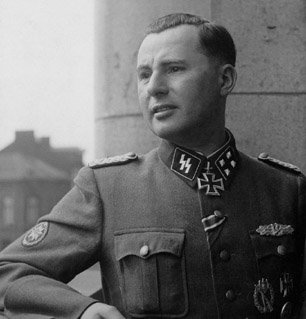
[Above: Léon Degrelle]
'German racialism meant re-discovering the creative values of their own race, re-discovering their culture. It was a search for excellence, a noble ideal. National Socialist racialism was not against the other races, it was for its own race. It aimed at defending and improving its race, and wished that all other races did the same for themselves. That was demonstrated when the Waffen-SS enlarged its ranks to include 60,000 Islamic SS. The Waffen-SS respected their way of life, their customs, and their religious beliefs. Each Islamic SS battalion had an imam, each company had a mullah. It was our common wish that their qualities found their highest expression. This was our racialism. I was present when each of my Islamic comrades received a personal gift from Hitler during the new year. It was a pendant with a small Koran. Hitler was honoring them with this small symbolic gift. He was honoring them with what was the most important aspect of their lives and their history. National Socialist racialism was loyal to the German race and totally respected all other races.'
[Above: Together.]
[Above: 'Gross-Deutschland ist Erstanden!' = 'Greater-Germany is Secured!'
In 1943 a military coup overthrew the Argentine government. The next year, in 1944 the United States government labeled the Argentine government as 'fascist' and enacted financial and trade restrictions against the country and used its clout to get other countries to do the same.
British officials went even further and captured Argentina's envoy to Germany, thus creating a diplomatic disaster for Argentina. Finally in 1944, the new leader of Argentina agreed to break all ties with the Axis countries.
Argentine patriots despised this and forced the new president to resign. Despite Argentina breaking ties with the Axis, the United States continued to maintain sanctions against Argentina.
In 1945, having little choice and when it no longer mattered, Argentina declared war against its friend, Germany, about a month before the end of the war.
Beneath the surface however, German politicians and soldiers found refuge in Argentina for decades to come.
[Above: One would swear this picture was taken in Germany, but it's not. It is in Argentina. It was taken in 1941 in Buenos Aires as Argentine troops were on parade. Many South American countries were close friends to Germany and the Axis.]
[Above: Argentine military 1940s]
[Above: Fascist style parade during the rule of Juan Perón, 1943-1946.]
Anyway, on July 9, 1945, Argentina's Independence Day, Juan Perón ordered a review of 20,000 troops. The impressive parade showed the Nahuel 'Tiger' tank, built entirely in Argentina. Overhead flew five small planes, the entirely Argentine built DL 22. There were also 78 German Focke-Wulfs.
Interestingly, the Argentine people shouted 'Argentina yes, Yankees no!', 'Nation yes, colony no!' and 'Down with the Jews!'.
Here are the pictures:
[Above: Juan Perón and high ranking members of the military review the country's troops. Note the huge Argentine Condor.]
[Above: Argentine soldiers march with pride. Note the German Stahlhelms!]
[Above: This shows Nahuel 'Tiger' tank with one 75mm gun, four machine guns, capable of 25 mph, weighing 35 tons and made entirely in Argentina.]
[Above: Parachutists, never before seen in Argentina amazed onlookers. Over the parade several airplanes towed gliders that would be used by the paratroopers.]
[Above: Cavalry towing 155mm howitzers.]
[Above: Rugged mountain troops.]
[Above: Anti-aircraft guns towed past spectators.]
[Above: This says:
[Above: This is a huge National Socialist rally in Buenos Aires. The striped flag alternating the German flag is the flag of Argentina. Circa 1938.]
[Above: Color video still of the rally above.]
[Above: A different rally in Buenos Aires.]
[Above: The top of this postcard says:
[Above and below: Honoring Adolf Hitler in Argentina.]
[Above: This postcard says 'Germans in Argentina'. Circa 1938.]
[Above: This is a German-style 'tinnie' or day badge commemorating a gathering.]
[Above: Anti-communist magazine 'Clarinada', June 1937.]
During WWII there lived thousands of German and Japanese people in Columbia. Due to relentless pressure from the United States, hundreds of these innocent people were deported and interned in concentration camps or jailed. This occurred even though the government of Columbia was never convinced in the slightest that these immigrants were dangerous.
The United States also forced the Columbian government to put restrictions of German airline pilots and technicians. Even though once again the Columbian government wasn't convinced, the United States pressed the outlandish idea that German and Austrian pilots could convert their planes into bombers and then attack the Panama Canal!
[Above: Columbian troops wearing helmets based on German pattern. Circa 1942.]
[Above: Ceremony led by Colombian National Socialist leader Emil Pruefert.]
[Above: Ceremony led by Colombian National Socialist leader Emil Pruefert.]
[Above: Emil Pruefert leaving the rally.]
[Above: Gathering of Colombian National Socialists.]
[Above: Young Colombians look forward to a new day, free of usury and economic slavery.]
[Above: Like much of South America, Colombia was heavily influenced by Germany. Just look at these young Colombian soldiers here, you'd swear they were Germans! Circa 1941.]
[Above: Colombian troops on the streets of Bogota, circa 1948-1949.]
'Speaking for the people of Estonia, I have nothing more to add, for our people have themselves supplied the answer in joining up to fight passionatly against Bolshevic Russia!
[Above: Waffen-SS Estonian sleeve shield]
[Above: This poster reads 'Hitler Päästja' (Hitler the Liberator).]
[Above: Estonian soldiers were among the proudest and most effective of the Waffen-SS volunteers.
[Above: Two Estonian Waffen-SS soldiers on leave in Prague. One sports a bandaged leg and cane.]
[Above: Estonian soldiers prepare to fire a German 'Panzerschreck' during the Battle of Narva,1944.]
[Above: A kitten, a flower and a grenade! These decorated Estonian Waffen-SS men know a few things about having fun.]
[Above: Poster.]
[Above: This odd postcard from 1941 bears the stamps of three different nations: the postcard itself is Russian, and it bears one German stamp and two Estonian stamps. These odd philatelic combinations, or franking, can often be found in the chaos and confusion of war. Click to see more.]
[Above: Rare imperforate variety of 1941 Estonian stamps. Click to see many more.]
[Above: Waffen-SS Estonian sleeve coat-of-arms shield variation]
[Above: A vibrant poster saying 'Freedom for people!.]
[Above: A striking poster, which says 'The protection of our homeland from Bolshevism!'.]
[Above: Two Estonian frontline nurses on the cover of 'Eesti Pildileht' or 'Picture of Estonia'.
[Above: Lithuanian poster equating Jews to Stalinism, 1941.]
[Above: The German magazine 'Hamburger Illustrierte' celebrating the freedom of Estonia from communist occupation.
[Above: German postcard showing the Estonian 'Internat. Handwerks-Ausstellung Berlin 1938' (International Craft Exhibition Berlin 1938). Click to enlarge and see the reverse of postcard.]
'During the Bolshevic reign the Lettish people lost 60,000 of their fellow countrymen, including some 20,000 women and 7,300 children and smaller folk.
[Above: Latvian postcard from 1934.]
[Above: Latvian postage stamp from 1919. Note the use of the tilted swastika!]
[Above: Waffen-SS Latvian volunteer arm shield]
[Above: Waffen-SS Latvian volunteer arm shield variations. Click to see more.]
[Above: Waffen-SS Latvian volunteer collar tab (final pattern). Click to see more.]
[Above: This poster says: 'Hitler the Liberator'.]
[Above: A Waffen-SS Latvian soldier fires a Panzerfaust in the final days of the war.]
[Above: Waffen-SS Latvian volunteers in action against the Red army in late 1944. Here a sniper and his spotter go in for the kill.]
[Above: Waffen-SS Latvian volunteers in action on the Eastern Front late 1944.]
[Above: The Waffen-SS Latvian Legion on Latvian Independence Day, 1943.]
[Above: Poster of SS Latvian legionnaire: 'To Arms - At Work!']
[Above: Latvian newspaper Tevija from January 1943. Hermann Göring and Alfred Rosenberg appear on the cover.]
[Above: Two Tevija newspapers from August 26-27, 1941. Click on either to see more details.]
[Above: Latvian women welcome German soldiers marching into Riga in July 1941.]
[Above: Latvian magazine 'Laikmets' ('Era' or 'Times') from 1943. The bottom text 'Priecigas Lieldienas!' means 'Easter Greetings!'.]
[Above: These private issue charity postage stamps were sold in 1941.]
[Above: This poster, featuring the 'thundercross' symbol, is from the 'Perkonkrusts' organization, which was formed in the early 1930s. Many of its members would later join the Axis forces fighting communism.]
[Above: Latvian magazine 'Mana Maja' ('My Home'), July 1941.]
[Above: This is a rare Latvian 'Mother's Card'. It says: 'Wer unsere Mütter ehrt, ehrt unser Volk!'
(Whoever honors our mothers honors our people!)]
[Above: A striking piece of art which says 'Latvia - Life!' and 'Bolshevism - Death!'.]
[Above: This is an eight minute film clip of the liberation of Latvia, July 1, 1941. It is taken from the weekly German wartime newsreel, 'Deutsche Wochenschau'.]
[Above: Julius Bertoletti, the suave master of art.]
By far one of the best Italian artists of the war, his masterful works were bullets defending his land and people. Now, without direction or purpose, the great immortal artists of a free Europe faded into mediocrity.
But the works of the great masters survived, telling a tale of fierce and spirited resistance, of total war and of spiritual triumph.
Physically the Axis might have lost World War Two... but on the spiritual plane, Adolf Hitler, Benito Mussolini, Corneliu Codreanu, Ante Pavelic, William Joyce, Hideki Tojo, Tomoyuki Yamashita and all the others stand eternal -- in total victory.
Living in the warm hearts of the faithful.
Forever loved.
Beautiful.
Immortal.
And free.
Hail Victory!
[Above: This work challenges the slacker: 'Etu.. cosa fai?.' = 'What do you do?']
[Above: 'Banditi e Ribelli - ecco la vostra fine!' = 'Bandits and rebels - here's your end!']
[Above: 'Le mamme d'Italia non Dimenticheranno!' = 'The mothers of Italy will not forget!']
[Above: 'Bolshevism is against family values' and 'Family is the greatest shame of all that has been created in civilized countries - Lenin', circa 1943.]
[Above: This is a coffee table book of Bertoletti's work. 173 pages, 294 color illustrations, 10 black and white, Libreria Bocca Publisher, 2002, Milan.]
[Above: Grand Hotel magazine, 1956.]
[Above: Grand Hotel magazine, 1962.]
[Above: Marilyn Monroe by Julius Bertoletti.]
[Above: Gino Boccasile.]
[Above: 'Enlist in the anti-aircraft artillery of the Air Force!']
A fascinating fact about Boccasile was that since his childhood he was missing an eye! Early in his youth he lost his left eye, when a drop of quicklime (calcium oxide) got into his eye while he drank from a fountain. This tragic handicap didn't hold him back from his dream, however. He completed his education at a fine art school in his hometown of Bari.
[Above: The cowardly enemies of fascism trying to destroy it, to no avail!]
Boccasile moved to Milan in the mid-1920s he found employment at the Mauzan-Morzenti Agency. Over the next few years he produced art for posters and the covers of illustrated fashion magazines.
After living in Buenos Aires for a short time he met his future wife Alma Corsi. In 1932 he relocated to Paris, where his fame grew and grew. An issue of 'Paris Tabou' was even dedicated to his work.
[Above: The racy 'Paris Tabou' magazine]
He founded a publicity agency called ACTA, after returning to Milan. He illustrated for many Italian periodicals, such as 'La Donna' (1932), 'Dea' (1934), 'La Lettura" (1934), 'Bertoldo' (1936), 'Il Milione' (1938), 'L'Illustrazione del Medico' (1939), 'Ecco' (1939), 'Settebello' (1939) and 'Il Dramma' (1939). He also designed numerous book covers for publishers Mondadori and Rizzoli.
[Above: A perfume advertisement]
An ardent fascist and stern supporter of Benito Mussolini, he produced many works for the Italian Ministry of War. Some of his greatest and most beloved works came after Mussolini's rescue and setting up of the Italian Social Republic in Northern and Central Italy. He created recruitment posters for the Italian SS and numerous other materials for the war effort. Boccasile even enlisted in the Italian Waffen-SS (29th Waffen Grenadier Division of the SS (1st Italian)!
[Above: 'HOLD ON!' (top) - 'It is about to strike the hour of atonement for the anti-Europe.' (bottom), 1944.]
After the war he was imprisoned and tried for 'collaborating with the fascists', which he was acquitted. Nonetheless he remained an outcast and was blacklisted. For years afterward he couldn't find steady work.
Boccasile further proved his loyalty to fascism after the war, affiliating himself with the fascist political party 'The Italian Social Movement' (MSI) and even doing illustrations for them.
[Above: Symbol of the MSI political movement, 1946.]
To survive, temporarily, he produced pornographic sketches for English and French publishers. The years that followed saw Boccasile opening another agency in Milan and creating a sea of amazing posters for numerous commercial products.
In 1952, at the age of 51 years old, Gino Boccasile passed into eternity. He died in Milan from bronchitis and pleurisy. The plastic world of the victorious Allies wasn't worthy of him anyway.
[Above: 'Your friend?'.]
[Above: 'Marfurt'?]
[Above: This is from a book called 'Il Decamerone'. The Decameron is a collection of novellas by the 14th-century Italian author Giovanni Boccaccio (1313–1375). The book contains 100 stories told by seven young women and three young men who try to escape the Black Death by hiding in a secluded villa. Click to see many more pictures!]
[Above: A racy perfume ad containing nudity.]
[Above: This is an ad for orange soda.]
[Above: Paris Tabou men's magazine.]
[Above: Gino Boccasile - he saw more with just one eye than most of the world could see with a million eyes.]
'The Bolshevics have robbed the Lithianian peasant of the land they have tilled since time immemorial; they have expropriated Lithuanian house-owners and thrown them on to the streets, in many cases putting Jews in their places.
[Above: 'Kova bolševizmui! Bendra kova – bendras laimejimas!' = 'The fight Bolshevism! Joint struggle - United Victory!'
]
[Above: A Lithuanian police battalion volunteer. Note the German style collar tabs on this man's uniform. A total of 38 Lithuanian police battalions were formed.]
[Above: Lithuanian volunteers in the Waffen-SS train with a 8.8cm Raketen-panzerbuchse 54 anti tank weapon nicknamed 'panzerschreck', which means 'tank terror']
[Above: Policeman with prisoners. Check out the homemade swastika armband! Vilnius, Lithuania. Circa July 1941]
[Above: Residents of Kaunas, Lithuania welcome a column of German troops. Note the plain clothes man (front right) on the sidelines wearing a swastika armband. This armband's swastika is not tilted as the NSDAP symbol and is probably handmade in support of the German liberators.]
[Above: Lithuanian women giving water to German soldiers, June 1941.]
[Above: Lithuanian women giving flowers to German soldiers.]
[Above: Lithuanian children hand flowers to a German officer.]
[Above: Lithuanian girls in national costumes welcome a German soldier, 1941.]
[Above: The flag of Lithuania is hoisted above Vilnius following its liberation by German forces.]
[Above: Lithuanian stamp showing the flag of National Socialist Germany, among others, 1939.]
[Above: This currency-like note was for purchasing various textiles. This denomination is one 'punkt' and expired April 30, 1945. They were released in Russia, Latvia, Lithuania and Estonia by the German liberators. Click on the image to see many more examples!]
[Above: The name of the soldier in this photo is Yang Kyoungjong. He was born in Shin Euijoo, Northwestern Korea on March 3, 1920.
[Above: DVD front/back.]
[Above: DVD.]
'The Japanese nation, which in the last two years has set us so many examples of glorious heroism, is undoubtedly fighting in the service of civilization at the other side of the world. Her collapse would not benefit the civilized nations of Europe or of other parts of the world, but would only lead to the certain triumph of bolshevism in the Far East.' Prophetic isn't it? We all know Communism, with the help of the United States, grips China and much of Asia with an iron fist. The United States is now hopelessly in debt to Communist China for trillions of dollars... Let's also not forget that the United States waged two unsuccessful wars against Communism in the decades that followed World War Two (Korea and Vietnam). The future was, and indeed still is, everything that Adolf Hitler warned us about!
[Above: This Japanese piece, showing a steering wheel, basically says 'We steer toward peace'.]
[Above: German Kriegsmarine sailors with a Japanese comrade.]
[Above: U-boat 861 crew chief Max Schley with 2 Japanese engineers helping with its overhaul.]
[Above: Aboard U-boat 180, here is Shosa Hideo Tomonaga, a Japanese submarine design specialist.
[Above: Commander of U-boat 861, Jurgen Oesten, celebrating with Japanese friends.]
[Above: German and Japanese sailors during a U-boat mission to Japan in 1943.]
'Just as there have always been two Germanys, so there have always been two Japans: the one, capitalist and therefore Anglophil—the other, the Japan of the Rising Sun, the land of the samurai. The Japanese Navy is the expression of this second world. It's amongst the sailors that we've found the men nearest to ourselves.'
[Above: Armband from the Todt Organization]
[Above: Collar tab of the Todt Organization]
[Above: Construction workers employed by the 'Todt Organization', a vast organization employing over two million workers. It was responsible for repairing roads, railways, airfields and also for building fortifications. Here, in this colorized photograph, three clearly non-white members, from North Africa, are building submarine shelters. Arabs from all over the Middle East volunteered to help Germany in all capacities.]
[Above: Camp chart showing the many different ethnic groups that worked on the Atlantic Wall in France -- more than half were not German.]
[Above: Todt Organization recruiting poster for Italians.]
[Above: Another Todt Organization recruiting poster for Italians. It says 'Bread and welfare', 1944.]
[Above: Todt Organization recruiting poster for French.]
[Above: A Todt Organization speaking with a construction worker.]
[Above: Note the additional armband (below the NSDAP armband) on the supervisor above is of this type.]
[Above: A Todt Organization guard. Note the Todt armband above his NSDAP armband.]
[Above: A Todt Organization guard at the Atlantic Wall. Note the massive Todt Organization built fortification, Cap Gris-Nez, France.]
[Above: Todt Organization recruits armed with MP 40 machine guns.]
[Above: Three Todt Organization postcards.]
[Above: Rare Todt Organization helmet.]
[Above: A Todt Organization belt buckle.]
[Above: Todt Organization identification book. Click on image to see pictures of the inside.]
[Above: This Todt service book is for 'Baustab' (construction staff) Speer (Albert Speer who was head of the organization).]
[Above: Waffen-SS Handschar collar tab]
'After a heavy artillery barrage the enemy attacked in the sector of the 13th SS and 297th Divisions in battalion and up to regimental strength, supported by tanks.
[Above: Seen here are Muslim troops of the Waffen-SS Croatian 13th Division 'Handshar.' They are reading a booklet written by the Grand Mufti. Their special 'fez' style hats were permitted for prayer, I assume. Of note is the fact that the Muslim world was very pro-German. There were pro-National Socialist governments and uprising in countries like Persia (Iran), Syria, Lebanon and Iraq, just to name a few.]
[Above: Recruitment poster for Croatians and Bosnians for the Waffen-SS. A Christian and a Muslim are shown here united against Bolshevism.]
'...König's battalion withstood five days of the most difficult defensive fighting against a vastly superior foe and sustained bloody losses...
[Above & below: Recruitment posters for Croatians and Bosnians for the Waffen-SS. The poster on top is mentioning Adolf Hitler and Croatian Leader Ante Pavelic and like the poster symbolism above it, a Christian and a Muslim are shown united against Bolshevism.]
Adolf Hitler had 60,000 Qurans printed to be distributed to Muslim Waffen-SS volunteers. These special editions had a swastika on the cover.
[Above: Waffen-SS Handschar collar tab]
'Bosnia's best sons are serving in the SS...
[Above: Five Bosnian brothers in the 13th 'Handshar' Muslim Division of the Waffen-SS, circa 1943/1944.]
[Above: Young Bosnian Waffen-SS soldiers that volunteered in the summer of 1944. They trained with the Kama division, and were later transferred to the Handschar division.]
[Above: Halim Malkoc.]
Malkoc was a young Imam in Bosnia when WWII began, but had already proved himself to be a brilliant military mind while serving with the Yugoslavian army. The historian George Lepre, in his 1997 book "Himmler's Bosnian Division; The Handschar Division 1943-1945", stated that Malkoc was a 'gifted military leader.'
[Above: Halim Malkoc looking over his comrades.]
Shortly after being appointed Imam, Malkoc and other Muslim religious leaders were sent to Dresden for a three week Imam Training Course organized by SS Obergruppenführer Gottlob Berger and honorary SS officer Mohammad Amin al-Husayni, the Grand Mufti of Jerusalem.
[Above: Halim Malkoc.]
In 1947, like so many brave, selfless and worthy human beings, Malkoc was executed. Another murder bloodying the hands of the Allies and their communist comrades.
[Above: The 'Kolnische Illustrierte Zeitung' magazine showing Muslim Waffen-SS volunteers.]
'The eighty or so Iron Crosses awarded to the Bosnians bear witness to their heroics.
[Above & below: The Waffen-SS went to great lengths to accommodate the cultural and religious beliefs of its volunteers. In this case the Muslim volunteers were allowed to wear a fez. This was to allow them to pray--touching their head to the ground, while wearing the fez. They were also given special rations to accommodate their religious diet restrictions. The red fez was not worn in the field, there was a grey fez for that purpose.]
[Above: Click image for larger view.]
[Above: Click image for larger view.]
[Above: Click image for larger view.]
[Above: Grey fez. Click image for larger view.]
'These deeds signify great benevolence for us Muslims and for Bosnia in general.
[Above: Anti-Partisan Guerrilla Warfare Badge. Click image to see examples in use]
The badge was made in three grades:
The Criteria were slightly different for the Luftwaffe, being based on 30, 75, and 150 operational flights/sorties flown in support of anti-partisan operations.
A version in gold with diamonds, maker marked C.E. Juncker, also existed but was never awarded.
[Above: Anti-Partisan Guerrilla Warfare Badge in gold with diamonds.]
[Above: German wearing the Anti-Partisan Badge.]
[Above: German troops gather for a ceremony outside of the Sarajevo City Hall building on April 16, 1941.]
[Above: A Bosnian Muslim woman greets German troops as they liberate Bosnia-Herzegovina in April, 1941. Source: German newsreel - 'Die Deutsche Wochenschau'.]
[Above: Bosnian volunteers are mentioned in this German soldiers' newspaper from the island of Rhodes, called 'Watch on Rhodes', from January 15, 1944. Click to see more.]
[Above: Here is the article mentioned above. Click to enlarge and read the English translation.]
'I knew there was a chance that a few traitors might get smuggled into the division,
[Above: A short (23 second) color video of Bosnian Muslim Waffen-SS volunteers during prayer.]
[Above: This H. Hoffman photo is another example of the respect the National Socialists held for their Japanese comrades. This postcard shows the Japanese Botschafter (Ambassador) Hiroshi Oshima.]
[Above: Adolf Hitler and Oshima, both bowing in respect of one another, meeting in 1939]
Adolf Hitler held Oshima in such high regard that on December 13th, 1941 he awarded him the coveted Grand cross of the German Eagle Order in Gold, of which he was one of only fifteen ever awarded!
[Above: Adolf Hitler awarding Oshima the Grand Cross of the Order of the German Eagle in Gold]
[Above: The astonishingly beautiful Grand Cross of the Order of the German Eagle in Gold]
Oshima paid Adolf Hitler back with utter loyalty and friendship. On the dark day of April 13, 1945 Oshima met with Ribbentrop and solemnly vowed to stand with Adolf Hitler and the people of Berlin, come what may! He said to Ribbentrop: 'I do not wish to be treated in the same manner as other diplomats merely by reason of great danger from the ravages of war'.
This brave old Samurai wasn't able to die with his comrades in the hellfire of Berlin, however. Adolf Hitler ordered him and the other diplomats out of Berlin and to safety. It wasn't to be, great Oshima.
On December 16, 1945 he was charged with 'war crimes' and brought before the kangaroo court called 'The International Military Tribunal for the Far East'. No surprise, he was found guilty of 'conspiring to wage aggressive war' on November 12, 1948 and sentenced to life imprisonment! This foolishness was later acknowledged and he was paroled in late 1955 and even granted clemency three years later.
[Above: International women's meeting in Berlin of thirteen nations. From left to right - Norway's Frau Olga Bjoner (Landesleiterin d. Norwegischen NS-Frauenorganisation), Germany's Frau Scholtz-Klink (Reichsfrauenführerin), Japan's Frau Oshima (wife of the Japanese Ambassador Hiroshi Oshima), Spain's Pilar Primo de Rivera (Frauenführerin, founder of the women's Falange section and sister of martyr José Antonio Primo de Rivera) and Italy's Marchesa Olga Medici. October 7, 1941. Courtesy of the Bundesarchiv.]
[Above: Inscribed and autographed picture of Oshima]
[Above: Here is a German postcard with a message in Japanese characters from 1942, sent from Berlin to Hamburg. Unfortunately, I have no clue what it says, but it is an interesting artifact of German-Japanese cooperation and friendship. Both countries had civilian, scientific and military exchange programs. The two allies had a deep respect for one another, despite having very different cultures and languages. There were approximately 10,000 Japanese nationals who lived in Germany during the Third Reich. Strange that the liars who rule this world try to convince us otherwise. If you still believe in the lies and propaganda after reading and seeing this page than you are a valuable slave to their disintegrating empire.]
[Above: Toshio Shiratori]
'The war has now moved from China to South Eastern Asia, and is about to enter the stage of the war for all Asia.'
After serving as the Director of the Information Bureau under the Foreign Ministry from 1929 to 1933, he worked as the Ambassador to Sweden and non-resident Ambassador to Finland from 1933 to 1936. In 1938 he was appointed ambassador to fascist Italy, two years later becoming the adviser to the foreign minister in 1940.
Shiratori was a proud nationalist and strong supporter of the alliance between German, Japan and Italy. He is said to have been deeply impressed by fascism. When Mussolini was betrayed and captured in Italy in 1943, Shiratori offered refuge in Japan to Benito Mussolini, who gratefully declined, saying
'I want to die in Italy'.
His support and work toward this end landed him in an American dungeon at the end of the war. This kangaroo court charged him with 'conspiring to wage aggressive war' in November 1948 and sentenced him to life imprisonment. He would die in his enemies captivity in 1949 of laryngeal cancer.
On October 17, 1978 Shiratori was one of the fourteen 'Class-A war criminals' enshrined at Yasukuni Shrine. This honor given to these war heroes by Japan was very controversial outside of Japan, of course.
[Above: Toshio Shiratori]
[Above: The Germans also celebrated traditional Japanese art. This postcard was part of a series. It was postmarked on March 29, 1939. On the reverse of the postcard it says:
'Austellung Altjapanischer Kunst.
(Exhibition of Ancient Japanese Art.
Mokuan was a Zen Buddhist priest who created the above art in the Fourteenth century.]
[Above: Patches worn by various Cossacks belonging to different regions. Starting at the top row, left to right, they are:
[Above: 'Alexei Sovichenko is a Cossack. He thus belongs to the warlike community of the east. Although the Cossack lands suffered exceptionally during the Civil War in 1917, and though the Bolshevists destroyed the last remnants of Cossack independence, what are known as the "Cossack Armies" have preserved intact the laws of Cossack tradition. Once they lived on the banks of the Don, the Terek, the Kuban and the Volga as farmers, but now they are fighting as volunteers with the Germans in the hope that one day they will be able to live there under their own laws once more.'
[Above: The mutual respect between National Socialist Germany and the Cossack peoples was great. Here is a beautiful work of art by Alof Jordan Alexej, entitled 'Pawlowitsch Bondar - volunteer in Germany Cossack Division 1944.']
[Above: Pictured here is a Cossack volunteer (from Russia). History paints them amongst the most tenacious, bold and brave fighters of World War Two. This man is a machine gunner and holds an MG-42 German machine gun.]
[Above: The 5th Don Cossack Calvary Regiment medal.
[Above: I'm unsure what this Cossack medal is exactly, but it is crazy cool!]
[Above: A parade celebrating the end of Ramadan in Kislovodsk, Caucasus, with Cossack volunteers riding by a massive poster of Adolf Hitler, October 1942.]
[Above: Highly decorated Kalmyk volunteers warmly greeting one another.]
[Above: Here is a magazine devoted to Cossack Waffen-SS from 1943.]
[Above: Flemish Waffen-SS sleeve shield variations. These are two of many other variations.]
[Above: On May 15, 1940 the Germans entered Amsterdam by the Berlage bridge. As you can see there were many people who welcomed them and saw them as liberators.]
[Above: The Waffen-SS are welcomed into Amsterdam by cheering crowds. Courtesy of the Bundesarchiv.]
[Above: Flemish youth recruiting poster.]
[Above: Danish Waffen-SS volunteer sleeve shields - same design and manufacture with color variation.]
[Above: The Schalburg Cross was a decoration awarded to men in the Danish Schalburg Corps.]
'Jewish rule in the Soviet Union was far greater than even I believed.
[Above: Danish Waffen-SS hero Christian Frederik von Schalburg (April 15, 1906 - June 2, 1942). Schalburg was a Danish army officer and the second commander of the Waffen-SS Free Corps Denmark. He was awarded the Iron Cross of 1st and 2nd class while serving in the Waffen-SS 'Division Wiking'. He died fighting communism on the eastern front. Loved and respected by his men, one of his soldier's even sacrificed his own life to retrieve Schalburg's corpse from the battlefield. On the day of his funeral Reichsführer-SS Heinrich Himmler posthumously promoted Schalburg to SS-Obersturmbannführer. The famous Danish poet Valdemar Rördam published a tribute to von Schalburg. A Danish medal and a unit of his countrymen were even named in his honor-- the Schalburg Cross (above) and the Danish Germanic-SS Schalburg Corps. In his name a memorial fund was set up, which sent packages to Danish volunteers on the Eastern Front.]
[Above: This is a postal label honoring Schalburg.]
[Above: This very rare postcard entitled 'De Zwarte Soldaat' (The Black Soldier) says: 'In Rememberance - Peter Ton 7-9-40, Hendrick Koot 14-2-41, Hanz Pelzer 22-3-'. It memorializes Dutch NSB National Socialist martyrs in the Netherlands.]
[Above: Danish Waffen-SS-Untersturmführer (Second Lieutenant) Gerardus Mooyman (September 23, 1923 – June 21, 1987). Mooyman was a hero of the battle against communism. In February 1943 during the battle of Lake Ladoga he annihilated 13 Russian tanks single-handedly. For this super-human feat he became the first non-German to be awarded the Knight's Cross. By war's end he destroyed 10 more!]
[Above: A powerful image of a Flemish Waffen-SS soldier.]
[Above: This woman is a volunteer in the Flemish Waffen-SS Red Cross.]
[Above: Handsome and brave SS-Obersturmführer Sören Kam.]
Søren Kam (November 2, 1921 – March 23, 2015) was born in Copenhagen, Denmark. He was a Danish commander in the Waffen-SS during World War II. As a young man he was a member of Denmark's own National Socialist party, the National Socialist Workers' Party of Denmark (DNSAP). It was here that Kam met Danish Waffen-SS hero and martyr Christian Frederik von Schalburg.
In June 1940 Kam volunteered with the Waffen-SS, serving in the 5.SS-Panzergrenadier-Division Wiking on the Eastern Front. He battle prowess and dedication soon earned him a promotion and he was transferred to SS-Junkerschule Bad Tölz and was promoted to SS-Untersturmführer.
[Above: SS-Obersturmführer Sören Kam photographed after the presentation of the Knight's Cross.]
In September 1943 Kam was head of a training school at Høveltegaard which was responsible for the training of new members of the esteemed Schalburg Corps, which he later commanded.
On February 7, 1945 Adolf Hitler awarded Kam the coveted Knight's Cross while he was a company Commander of the SS-Panzergrenadier-Regiment 'Germania'. He was only the third Dane to receive this award. It was noted that Kam had showed 'especially decisive action in the battle against the enemy'. Furthermore he was wounded in battle several times and for battlefield bravery was awarded the Iron Cross First and Second Class, the Infantry Assault Badge, Close Combat Clasp and the Silver Wound Badge. He had been involved in some of the bloodiest battles of the war, in places such as Dnipropetrovsk, Kharkiv, Cherkasy, Kovel and Warsaw.
Before his death in 2015, at the age of 93, he wrote his 400 page memoir, unfortunately only published in Danish.
Sören Kam has passed away on March 23, 2015 in Kempten, Germany. His beloved wife, Eleonore Kam, passed away just weeks before.
[Above: 1941 magazine 'Vreugde en Arbeid -
Freude und Arbeit - Joie et Travail', in Dutch, German and French 'Joy and Labor'. Click to see more!]
[Above: Valdemar Rørdam (September 23, 1872 – July 13, 1946) was a Danish poet and author and a stern opponent of communism.
[Above: This series of four notes bearing the words 'Faedrelandet' (The Fatherland) were printed by 'Danmarks National Socialistiske Arbejder Parti' (SNSAP). They were issued in 1942 and were probably used as in some fundraising capacity (to support the Faedrelandet newspaper, pay party dues or to be used in the Danish SNSAP canteen at its headquarters in Copenhagen. The text beneath 'Faedrelandet' says 'For Denmark's honor, freedom and right'.]
[Above: Pictured here, in 1941, a volunteer for the Danish Legion of the Waffen-SS is interviewed in Copenhagen.]
[Above: Pictured here, also in 1941, are more Danish volunteers.]
[Above: Circa 1941.]
[Above: A young Danish paramilitary volunteer.]
[Above: Here is a Dutch armband. It translates as 'In the service of the German army'.]
After the 1940 German invasion the DNSAP received financial and political support from Germany. The party led huge recruiting drives for the Waffen-SS amd the Frikorps Danmark.
The 'democratic' Allies banned the party in May 1945. Clausen was thrown in a dungeon by the vengeful Allies, where he died of 'natural causes'. But some brave individuals kept the flame alive. The DNSAP is still active today, waiting for the moment of our shared destiny -- vengeance!
[Above: Martyr and hero Frits Clausen (November 12, 1893 – December 5, 1947) , the leader the 'Danmarks Nationalsocialistiske Arbejderparti' (DNSAP).]
[Above: Headquarters of the DNSAP.]
[Above: Danish National Socialist Youth (NSU) member in Copenhagen in June 1941. The NSU was the DNSAP's youth organization.
[Above: A vignette stamp of the DNSAP.]
[Above: An envelope sent to the Danish Nazi party from Berlin.]
Van Rappard eventually lost control of the party and three separate groups splintered off and claimed the NSNAP name. The NSNAP would never recover. It finally died on December 14, 1941. Their rival, the NSB, supported by Germany, was now in control.
But van Rappard was not beaten. He proved his mettle and joined the Waffen-SS. Most of the old comrades from the NSNAP joined Mussert's NSB. He joined the vaunted 1st SS Division Leibstandarte SS Adolf Hitler and saw service in Yugoslavia and Greece. He later re-enlisted in the 5th SS Panzer Division Wiking. He was wounded on a campaign in the Caucasus. A determined soldier, he continued his fight in various other Waffen-SS divisions. In August 1944 he was wounded in Estonia and was awarded the Iron Cross Second Class.
In May 1945 Van Rappard was captured by Canadian invaders. He was charged for his service for Germany and was sentenced to death! The sentence was later changed to life in prison. In 1953 he died of a 'brain hemorrhage' in the dungeon he was left to rot away in.
[Above: Ernst Herman van Rappard (October 30, 1899 - January 11, 1953) was born in Banyumas Regency, Central Java, Dutch East Indies.]
[Above: NSNAP poster.]
[Above: Major Cornelis Jacobus Aart Kruyt.]
[Above: Major Kruyt speaking at a meeting in Nijmegen, August 1934.]
[Above: Tinnie featuring the image of Major Kruyt.]
[Above: NSNAP party pin.]
[Above: 'Holland voor Hitler N.S.N.A.P.' (Holland for Hitler)]
[Above: Here is a sheet of advertising stamps for the National Socialist Party (NSAP). It was released by Aage H. Andersen.]
[Above: Aage H. Andersen]
In 1933 Andersen joined Wilfred Petersen's National Socialist Party. This didn't last long, however, and in 1934 he joined the DNSAP (Danmarks Nationalsocialistiske Arbejderparti), Denmark's largest National Socialist party. But he soon found that the DNSAP was too light on the Jewish problem and on October 31, 1935 he founded the National Socialist Labor Party (NSAP). The NSAP program stated: 'The NSAP is fighting for the complete redemption of the Danish people through a radical solution of the Jewish question through use of the law.'
In 1938 Andersen was sentenced to 80 days in jail for the 'relegation of another religion', namely Judaism. This wouldn't be the last time he was sentenced for this 'crime'. Andersen proved time and time again he wasn't afraid of the powers-that-be and that nothing would silence him from speaking the truth.
From May 1939 until May 1943 he published the newspaper 'Battle Sign' (Kamptegnet), which used many articles and art from the German newspaper Der Stürmer. From June 1940 until February 1942 it was edited by the famous writer and activist Olga Eggers. After the closing of Kamptegnet Andersen became the editor of the newspaper Racial Service (Rastjänsten), from December 1943 to December 1944. Andersen also published a handful of books on the Jews and their schemes for world domination.
On January 26, 1941, he again worked with the DNSAP, but this didn't work out and on October 31, 1941, he formed the association 'Danish Antidote League' (DAL). A little more than two years later, on May 20, 1944, he served as head of the Schalburg Corps Central Office for Racial Issues.
After the war, on August 19, 1947, the Allies sentenced Andersen to eight years in prison. Being a journalist, author and patriot were his 'crimes', such is the false democracy peddled in this world. But apparently this wasn't enough, on February 24, 1948, he was sentenced to ten more years in prison by the vengeful Jewish powers.
[Above: An illustration from Andersen's newspaper 'Kamptegnet']
[Above: An illustration from Andersen's newspaper 'Kamptegnet']
[Above: An illustration from Andersen's newspaper 'Kamptegnet']
[Above: Olga Eggers]
Eggers was born in the Dutch East Indies, but moved to Denmark at a young age. Born into a wealthy family of power and means, her beliefs and lifestyle were similar to others in the bourgeoisie class she represented. Her father was a Baron and Police Lieutenant, and, interestingly enough, she was the cousin of Third Reich financial wizard Hjalmar Schacht, who she kept in contact with throughout her life.
Olga Eggers wasn't one to keep silent about things she disagreed with. With a high intelligence and private education, she used her intellect and mettle to speak out about the ills she saw in society, especially with women's rights, of which she was a pioneer in Denmark.
In 1900 she became a teacher, but eventually took on a career as a writer. She quickly become a popular and widely respected writer, with articles appearing in Politics and Our Ladies, among others.
In 1901 Eggers impulsively married a young author after only fourteen days of knowing one another. This marriage ended five years later, but she found love again, this time with a professor. This marriage produced a daughter they named Ulrica in 1913. But again, her marriage wasn't meant to be and ended in tragedy when her husband died after only three years of marriage. She would remain single for the rest of her life. Perhaps it is no coincidence that in her 1908 novel 'Den røde Synd' (The Red Sin), she states that women are only able to love but once in their lives.
[Above: Olga Eggers]
In 1903 she wrote her first novel, 'Zigøjnerblod' (Gypsy Blood) and the following year wrote 'Moderne Ægteskab' (Modern Family). Many books followed in the years to come. Her writings defended traditional values and beliefs, and dealt with such things as motherhood, loyalty, love, family, but also eugenics, abortion and even advocated the dissemination of information about birth control, something controversial at the time.
In the late 1920s she traveled to Liberia for seven months, which she later described in her 1931 book 'Ene Hvid gennem Liberiets Urskove' (A White Alone in the Liberian Jungle). In this book she argued against racism and prejudice against black Africans.
Before becoming a National Socialist Eggers was a staunch Social Democrat. She wrote warm and heartfelt articles and spoke at Social Democrat conventions to much applause. She held numerous posts during this time, even being on a board of directors. She knew several Jews who she thought were her friends, one being a Danish-Jewish critic and scholar named Georg Brandes (born Morris Cohen) and another Danish-Jewish singer named Harry Haurowitz, who she dedicates one of her books to (Henri - There is No Death, 1926). She was as far from being a National Socialist as one could be and was completely in the dark. Her sheltered life, however, was about to end.
In 1932 Olga Eggers reported her lawyer, whom had worked for her for a number of years, for fraud. Apparently this unscrupulous but well-connected individual had stolen an undisclosed amount of money from her. High level politicians and political leaders got involved and they tried in vain to get her to rescind the charges. Eventually it reached the Attorney General and was rejected for 'lack of evidence'. She appealed the case to the mayor, but again was denied. She even appealed to prominent Social Democrat leaders, whom she thought were her friends, for help, but they abandoned her.
[Above: Olga Eggers]
She was hurt and disillusioned, yet her eyes were opened to the rotten corruption of her former beliefs. The system she had so vocally fought for in the past she now rejected. She wrote about the betrayal in 1935 in the newspaper House and Lady. She brought up how it looked to the youth to see how a widow can be stolen from, apparently legally.
Eggers had several National Socialists in her family, both on the Danish and German sides. Sometime after her regular family visits with her German relatives she became convinced of the truth of National Socialism. Eggers threw herself behind her newfound beliefs of National Socialism. It was written that she made Hitler, Göring and Goebbels look like Democrats in comparison to her!
In April 1935 she wrote glowingly about Hermann Göring's wedding in an article entitled 'The Happy Berlin'. That same year, in 1935, Olga Eggers joined the Danmarks Nationalsocialistiske Arbejderparti (National Socialist Workers' Party of Denmark), or DNSAP, although this wouldn't last long and she joined the Danish Socialist Party (DSP). She was the chairman and a lecturer of the DSP's Nordic Action Women's Group, and wrote articles for its publication the Nordic Voice.
In the summer of 1938 she joined Aage Andersen's National Socialist Labor Party (NSAP). In 1939 she was entrusted with the job of editor of Aage Andersen's newspaper Kamptegnet (Battle Sign). She also contributed many articles for Kamptegnet defending traditional, National Socialist values. She translated important works from German, such as Martin Luther's 'Of the Jews and Their Lies'.
Battle Sign was closed in May 1943 after legal action from a wealthy Danish wholesaler and department store owner Peter Møller Daell. Battle Sign had reported that Daell had an affair with his Jewish secretary Ella Wassermann. It told that she had great influence on Daell's businesses, replacing Danish employees with Jewish ones. It also reported that Daell's Danish workers were being treated very badly.
Battle Sign was apparently popular amongst the workers and customers at Daell's warehouse and department store, where it was distributed without charge. Flyers were also handed out detailing Daell and Wassermann's affair.
[Above: Daell's department store catalog, 1936]
In January 1942 Daell and Wassermann brought a lawsuit against Eggers and Battle Sign. Eggers was removed from her position of editor and Aage Andersen took over. Unabated he continued speaking out against the degenerate pair of adulterers Daell and Wassermann. The court case raised massive public attention. Public attendance of the trial was so great that a larger courtroom was needed. Eggers pointed out that she had not intended a fight against anyone specific through her articles, but against the Jewish race as a whole, and she should be protected by her right of freedom of expression.
Daell and his Jewish friends, however, cared not for such illusory things as 'freedom'. On May 15, 1942 the judge ruled that Battle Sign's allegations were defamatory and unfounded.
Eggers and Andersen were convicted of defamation. Being a famous writer Eggers received a small writer's support stipend. It was suspended! Daell was awarded kr 4,000 and Wassermann kr 2,000 in damages.
Eggers and Andersen appealed the unjust verdict to the Supreme Court and the case was resumed in October 1942. All the while Daell and Wassermann railed for a stiffer sentence. Daell and his Jewish allies flexed their hidden power and the Ministry of Foreign Affairs demanded that Battle Sign cease the accusation and any reference to the case.
This whole affair is extremely telling. Consider that all of this happened during the supposed 'Brutal Nazi Occupation' of Denmark. What a farce they've peddled to us.
Nonetheless, the Battle Sign fought on. The newspaper published new evidence, namely the guestbook of a hotel which revealed the names of Daell and Wassermann! Andersen accused the two in court of false testimony. The packed courtroom took the side of Andersen and stood beside Battle Sign.
[Above: Olga Eggers, 1906]
The final hearing was on November 6, 1942. Andersen received support from all levels of Danish society, including the brave men of the Frikorps Denmark. The courtroom turned hostile against Daell and his Jewish mistress and they had to be kept under police guard and come and go through the back door.
On March 29, 1943 the Supreme Court ruled. Jewish power won the day. A unanimous decision of the High Court not only enforced the previous ruling but even stiffened the penalties! Eggers and Andersen now would even have to do 160 days in jail! All in all Eggers lost over $10,000.
Ella Wassermann later moved to Sweden, but returned back to Denmark after the war to a high paying and influential job working for the Ministry of Foreign Affairs and later became a consul in Berlin. Wow, a Jewish secretary sure does climb the rungs of society fast, huh?
Blacklisted by the immense Jewish power in German occupied Denmark, in August 1943, Eggers moved to Germany and took a job as interpreter for Heinkel-Werke. Letters to her family indicate that she was practically expelled from Denmark after the ordeal!
Olga Eggers was arrested in her home in Holbergsgade immediately after the end of WWII. She was taken to Vestre Fængsel prison in Copenhagen, where she was murdered at 69 years of age! It was claimed that she 'died from falling down stairs and then had a heart attack...'!
[Above: Communist 'resistance' members arrest Olga Eggers. The abuse she must have suffered by these sadists...]
Eggers is amongst the sea of great men and women who have been 'deleted from history'. The enemies of truth have attempted to erase them, afraid that people will be inspired by their heroic lives and struggles for truth.
[Above: Very rare 1930s NSAP Yule postcard.]
[Above: The first two Belgian postal labels, in Dutch, say: 'Jews out!'. The third label says the same thing, but in Dutch and French. There are a variety of types of these labels, the ones shown here are considered type 1 (type 2a and 3a of the variety) and type 2 (1a of the variety). The varieties have to do with very minor printing variations.]
[Above: Flemish National Socialist Youth Armband (NSJV).
[Above: Pictured here during a ceremony are Flemish Waffen-SS volunteers (Flemish people are from a Dutch speaking part of Belgium).]
[Above: Flemish SS infantry division recruiting poster.]
[Above: Flemish Waffen-SS frontline nurses.]
[Above: 50 Francs note from 1942. Click to see back of note.]
[Above: Waffen-SS Free India Legion sleeve shield]
[Above: Asit Krishna Mukherji]
'If I had to choose a motto for myself, I would take this one — 'pure, hard, certain' — in other words: unalterable. I would express by this the ideal of the Strong, that which nothing brings down, nothing corrupts, nothing changes; those on whom one can count, because their life is order and fidelity, in accord with the eternal.'
[Below: Savitri Devi, circa 1937]
Savitri Devi Mukherji (September 30, 1905-October 22, 1982) was born with name 'Maximiani Julia Portas' and chose Savitri Devi (Savitri meaning 'solar energy', and Devi being a title) as her pseudonym. She was given this name the girls at Shantiniketan University. She was a revolutionary writer and covered many topics, with an especially passionate interest in Animal Rights and National Socialism. In fact, she pioneered many ideas in both subjects.
Savitri grew up in France but was of Greek, Italian and English ancestry. She obtained two Masters Degrees and a PhD in philosophy from the University of Lyon and also studied chemistry while there. She was even a French tutor to the famous philosopher Cornelius Castoriadis between 1932 and 1935. She spoke more than a half a dozen languages!
Savitri became a strong admirer and supporter of National Socialist Germany. She saw that Adolf Hitler was the leader of the fight in the battle against evil in this world. Her strong beliefs in Animal Rights were shared by National Socialist Germany, which had outlawed cruelty against animals. Adolf Hitler himself was even a vegetarian, as she was. But that was just one aspect of National Socialism that Savitri admired, she believed it to be the answer to the world's problems.
[Below: Savitri Devi]
In 1932 Savitri went to India in search of the remnants of Aryan Paganism that was still in practice there. Around this time she took the name Savitri Devi and began practicing Hinduism. She wrote 'A Warning to the Hindus' while there in an attempt to help stop the deterioration of Hinduism by the encroaching Christianity and Islamic religions.
Savitri worked for the Axis by gathering intelligence on the British occupiers in India and circulating pro-Axis leaflets. She enabled the leader of the Axis Indian National Army Subhas Chandra Bose to meet and make contact with Japanese representatives.
Savitri Devi married a fellow National Socialist Asit Krishna Mukherji in order to stay in India. The British could intern her for being an undesirable foreigner, as she was a Greek citizen at that time. Mukherji was the editor for the National Socialist pro-German newspaper 'New Mercury'.
After the world lost the chance to shake free from the corruption it has endured for so long, Savitri didn't give up the fight for freedom. She traveled to Germany in 1948 and from a train window she threw thousands of leaflets and small packages with chocolates and other treats. The message on the leaflets was simple but bold; 'Men and women of Germany hold fast to our glorious National Socialist faith, and resist!' She later wrote a book about her experiences in post-war Germany called 'Gold in the Furnace'. The name referring to the strong German people and the National Socialist spirit that resisted the insane hell and mountainous crimes the Allies committed against the German people.
[Below: Another monumental book by Savitri Devi]
Savitri was arrested for promoting National Socialist ideas on German Territory. She served eight months of her two year sentence. She met and became friends with many National Socialists including SS prisoners. After her release she was kicked out of Germany.
She illegally entered Germany in 1953 using her maiden name and a Greek passport and went on a pilgrimage of Holy National Socialist sites. She later completed a book in 1958 called 'Pilgrimage' about her experiences.
Savitri became heavily active in the newly established post-war National Socialist organizations. She became close friends with the famous German fighter pilot Hans-Ulrich Rudel and many notable German National Socialists.
[Below: Gold in the Furnace]
Perhaps one of the most important things Savitri Devi did was popularize the reality of Adolf Hitler as a divine entity. She wrote in 'The Lightning and the Sun' about Adolf Hitler being sent by God to perform divine work on Earth. She influenced many important followers of Adolf Hitler's teachings, including the great Miguel Serrano of Chile.
Savitri Devi decided to move back to Europe from her home in India in the 1970s, at this point her eyesight had begun to fail and her health was greatly deteriorated. She visited her old comrades in Germany and France one final time, before moving in with her friend Muriel Gantry in England.
It was here that this brilliant and shining individual passed into eternity. It was most unfortunate that she died right before she was to travel to the US to give lectures at the invitation of Matt Koehl of the American Nazi Party (later renamed New Order). Savitri's ashes are enshrined in a memorial room at the headquarters of the New Order next to the ashes of George Lincoln Rockwell in Wisconsin.
Perhaps no book ever written, in the glorious times of National Socialist Germany or after, captures the beauty and spiritual power as Savitri's book 'The Lightning and the Sun'. Savitri's life and works continue to uplift and inspire future generations of National Socialists around the world.
[Below: Savitri Devi]
'Above him and above the smoke of the Russian cannons and of the burning city, above the noise of explosions, millions and millions of miles away, the stars — those same stars that had shed their light over the adolescent's first prophetic ecstasy forty years before — sparkled in all their glory, in the limitless void. And the man against time, who could not see them, knew that his National Socialist wisdom, founded upon the very laws of life; his wisdom that this doomed world had cursed and rejected, was and would remain, in spite of all, as unassailable and everlasting as their everlasting dance.'
-Savitri Devi, speaking of Adolf Hitler, The Lightning and the Sun.
[Above: An Australian-German club in Adelaide, South Africa celebrates the 50th birthday of Adolf Hitler, circa 1939.]
[Above: Arnold von Skerst was 6 ft tall, with blue eyes and blond hair, and a military bearing.]
In China he found work with various firms and by 1926 divorced his wife and two years later married again. In Harbin China he married Olga Gorlov and adopted her son.
In 1930 he relocated to Germany and was naturalized the next year. In May 1931 his work took him to Melbourne as agent of a Berlin oil company, but the financial crash in Germany ruined this venture. He ended up stranded in Australia, but undeterred, he formed a company, the Australia North China Trading Co., which took him back to China for a spell.
von Skerst was fluent in seven languages, Russian, German, English, French, Italian, Polish, Spanish and some Japanese. This enabled him to teach foreign languages when needed be.
The year Adolf Hitler came into power, 1933, von Skerst joined the National Socialist German Workers Party (NSDAP). He became a propaganda leader in Sydney and the next year he was appointed editor of Die Brücke, a bilingual weekly newspaper.
In April 1934 he married Florence Marjory Heyns in a Syrian Orthodox Church. He was extremely determined and active in the National Socialist movement. His energy paid off and he became the Australian correspondent of the Deutsches Nachrichtenbüro (German News Office) in Berlin, representative of the Ostasiatische Rundschau (Far Eastern Review) in Hamburg and in 1937 he became secretary of the German-Australian Chamber of Commerce.
Like tens of thousands of other innocent people around the world, who were jailed for no other reason than their beliefs, von Skerst was imprisoned in 1939 at the start of WWII.
Released from an internment camp at Tatura in 1946 he found the world far different than before he was imprisoned. A brainwashed mass of robots awaited him. He was now a pariah, completely shunned and hated. The media attacked him and he was unable to get even the most menial of jobs.
On Christmas Eve 1948 the darkness of the world, absent of Adolf Hitler, became too much and he committed suicide.
[Source: Australian Dictionary of Biography, Volume 11, 1988]
[Above: National Socialists from Barossa Valley, South Australia, 1935.]
[Above: This is the German-Australian Weekly newspaper entitled 'Die Brücke' (The Bridge), Vol 11, Number 52, 1936.]
[Above: The front page of Arnold von Skerst's internment file, 1939.]
[Above: A tragic end.]
[Above: Surya Majapahit, the Sun Emblem of ancient Majapahit empire]
[Above: Local branch of the NSDAP in Padang, West Sumatra.]
The Indonesian branch of the National Socialist Party was founded in June 1933 under the supervision of NSDAP/Auslands-Organization (Nazi Party Foreign Organization) by German diplomat and personal friend of Adolf Hitler, Walther Hewel.
This foreign branch of the NSDAP was very popular among the large German Dutch East Indies community. In fact, by 1937
it had established branches in Batavia (Jakarta), Bandung, Makassar, Surabaya, Semarang, Medan, and Padang.
[Above: Walther Hewel (January 2, 1904 – May 2, 1945).]
Walther Hewel later returned to Germany and in the following years served Adolf Hitler and Germany in a diplomatic capacity. As the war years advanced Hewel became Adolf Hitler's personal assistant.
Hewel remained with his friend and Führer until the dire end. He was one of the last people to engage in a long, personal conversation with Adolf Hitler. Even in the dark days preceding the end, Hewel tried to cheer his friend up and brought whatever light to the desperate situation that he could.
Following Adolf Hitler's martyrdom, Hewel escaped the Führerbunker in a group led by SS-Brigadeführer Wilhelm Mohnke. But this was only a delay of Hewel's plans. He knew that without Adolf Hitler there was no place for him. Courageously, with a lifetime of service to his country flashing through his mind, he bit down on a cyanide capsule while shooting himself in the head.
The NSDAP party was not only in the Dutch East Indies however. There was also the Dutch National Socialist Party, the NSB (Nationaal-Socialistische Beweging). In 1936 the leader of the NSB, Anton Mussert, twice visited Indonesia. Many local Indonesians supported the NSB, and by 1937 there were over 6000 members.
[Above: German civilians from Dutch Batavia (Jakarta) celebrating the Japanese invasion of Java island (Dutch East Indies) in 1942.
[Above: Pin of the B.U.F. = British Union of Fascists.]
'Once with us, always with us.'
'The Jews have been treated in Britain with a fairness and generosity unparalleled elsewhere, and have banded together against us, despite the conventional opinion that it was very wrong to combine against them. And now this organized alien minority, who have enriched themselves at our expense, repay our generosity by political terrorism carried out at the point of the economic gun.
[Above: Sir Oswald Mosley (November 16, 1896 - December 3, 1980)]
'Not on grounds of race or religion, but on the fundamental principal of Fascism, we declare that we will not tolerate an organized community within the state which owes allegiance not to Britain, but to another race in foreign countries... We shall not fight Germany again in a Jewish quarrel.'
[Above: Sir Oswald Mosley addresses a meeting held in Albert Hall April 22, 1934. Approximately 10,000 attended, which at the time was one of the largest indoor political meetings ever held.]
[Above: An early photo of Oswald Mosley.]
[Above: Sir Oswald Mosley in Italy in 1932 meeting Benito Mussolini. He met Mussolini a half dozen times, and Adolf Hitler twice.]
[Above: Sir Oswald Mosley on the cover of Time Magazine, March 16, 1931.]
Click here to hear the excerpt (1:42)
'Those who march with us will certainly face abuse, misunderstanding, bitter animosity, and possibly the ferocity of struggle and of danger. In return, we can only offer to them the deep belief that they are fighting that a great land may live.'
[Above: The British Union of Fascists march in London, circa 1939.]
[Above: The old and the young unite for freedom.]
[Above: William Brooke Joyce (April 24, 1906 - January 3, 1945)]
[Above: American born William Joyce, propagandist for the B.U.F. and later famed radio broadcaster for Germany, was put to death for treason after the war even though he was born in America, lived in Germany and had German citizenship, and had given up his British citizenship.
[Above: William Joyce went on to head the National Socialist League (1937- 1939). It's official newspaper was 'The Helmsman'. Click to see more.]
[Above: Emblem of the short-lived National Socialist League.]
But Joyce had a destiny all his own and on May 1939 the NSL had its final meeting. Shortly after, Joyce went to Germany to fullfil his glorious fate.
[Above: Margaret Joyce (July 14, 1911 - 1972), William Joyce's wife and comrade. She was born in Old Trafford, Manchester England. She was a green-eyed, auburn haired beauty. She married William at 26 years of age. She was the assistant secretary for the British National Socialist League, which William Joyce was its leader. She did over 500 programs for the German 'Reichsfundfunk' with her husband. It is said that she wrote many of her husband's radio addresses. Her first broadcast from Berlin was on November 10, 1940. In 1942 she did weekly talks under her real name about women's economic problems. Margaret was arrested shortly after her husband on May 28, 1945. She was taken to London on charges of treason. While her husband was hanged in 1946 for treason, she was spared a trial on the basis that she was a German citizen. This makes absolutely no sense that she was considered a German citizen, not a British one. You see, her husband was naturalized as a German citizen in 1940, yet he was hanged because they said he was British!]
'My movement has been largely built up by the fanaticism of women; they hold ideals with tremendous passion.
[Above: Diana (Mitford) Mosley (June 17, 1910 - August 11, 2003). Diana was Oswald Mosley's wife.]
[Above: Unity Valkyrie Mitford (August 8, 1914 - May 28, 1948), Diana Mosley's sister. Unity was a friend of Adolf Hitler and a staunch supporter.]
[Above: This is a proposed sleeve shield design for Swedish Waffen-SS volunteers. This was taken from a map produced by the SS (Germanische Leitstelle, Amtsgruppe D of the SS-Hauptamt), being one of the last documents produced by the SS foreign volunteers recruitment office.]
[Above: A Swedish National Socialist postcard from the 1930s. This was produced by Aage H. Andersen's group, the N.S.A.P. - 'nordisk helg' translates as 'Nordic weekend'.]
These brave men, leaving behind the safety of their neutral country, served in the 5th SS-Panzer Division Wiking, the 11th SS-Freiwilligen Panzergrenadier Division Nordland and the 23rd SS-Freiwilligen Panzergrenadier Division Nederland and several others. In Nordland Division, they were concentrated in 3 Kompanie, SS Aufklärungs Abteilung 11. There were so many Swedes in this company that it became known as the 'Swedenzug' (Swedish platoon).
Thus far research has found that at least 20 Swedish officers graduated from the SS-Junkerschule at Bad Tölz in Bavaria. Additionally, at least five Swedish officers served in the SS Kriegsberichter Kurt Eggers unit as war correspondents.
It is also known that numerous Swedes won the Iron Cross 2nd and 1st Class, at least one was awarded the Honor Roll Clasp of the German Army, and even the German Cross in Gold.
These valiant, selfless and courageous Swedes were even amongst the last defenders of Berlin.
[Above: Heinrich Himmler during a visit to the Sennheim camp inspecting Swedish volunteers. Circa Autumn 1943.]
[Above: A Swedish volunteer fighting with the Finns on the Hanko Front reads a newspaper in finely decorated barracks, 1941. Many Swedes volunteered to fight the communist Soviets with their Finnish brothers before WWII.]
[Above: Swedish SS-Untersturmführer Heino Meyer, born in Stockholm in 1923. In 1941 he joined the Waffen-SS and served in the Wiking Division. In 1942 Meyer was wounded on the Eastern Front. After recovering from his wounds he trained to be an officer at the SS-Junkerschule in Bad Tolz and graduated in 1943.
Meyer was still being treated for his wounds when the war ended.
He moved to South America and later Spain. His whole life he carried shrapnel in his neck that couldn't be extracted because the surgery would be too dangerous. He died in 1995 in Argentina.]
[Above: Swedish SS-Untersturmführer Hans-Gösta Pehrsson, Narva (the eastern most city in Estonia, along the border of Russia), 1944.]
Before the war he worked in Denmark as a chemist in the 1930s. On May 8, 1936 he was married to an Austrian woman named Edith Gelfius. Shortly after their marriage they had a daughter.
Pehrsson recognized the danger of communism early and by the time 1941 came around he eagerly joined the Waffen-SS. After numerous battles, injuries and promotions he collected a large repertoire of medals, like the Iron Cross 1st and 2nd class, the bronze Infantry Assault Badge, the black Wound Badge, the NSDAP Honor Cross for Combatants, and the silver Close Combat Clasp.
On May 15, 1944 he was promoted to SS-Obersturmführer. The love and respect he earned from his men was near mythic in proportions.
SS-Obersturmführer Josef Sepp Schirmer, of the 4th/SS Panzer Reconnaissance Unit 11, recollected Pehrsson warmly:
Pehrsson's superhuman courage and warrior-spirit shined brightest in October 1944 in Trekni while commanding Nordland Division. One of his comrades remembered:
During the following days of hell, from October 16 - 19, 1944 Pehrsson and his men destroyed seven T-34 tanks and killed many enemies. He was later awarded the coveted Honor Roll Clasp.
[Above: The Honor Roll Clasp of the German Army had the following requirements:
It is estimated that a mere 4,556 Honor Roll Clasps were awarded before the end of the war.]
In Autumn of 1944 Pehrsson and his Nordic comrades volunteered to fight in four terribly violent Courland (Kurland) battles.
[Above: Postage stamps overprinted on April 20, 1945 in the area along the North Sea coast of the Baltic Peninsula.]
By January 1945 the battered division was finally moved to Germany. The heroic Pehrsson continued his fight in Pomerania, where every day was close combat. For these bloody days Pehrsson received the Silver Close Combat Clasp.
[Above: Silver Close Combat Clasp.]
On March 8, 1945 Pehrsson was severely wounded when his bunker was destroyed by a bomb near Altdamm in Hornskrug (Western Pomeranian). His good comrade SS-Unterscharführer Franz Berezyak saved him by evacuating him though a forest and a swamp to Stettin. Pehrsson lived and received the Silver Wound Badge.
[Above: Silver Wound Badge.]
On April 15, 1945 Pehrsson was promoted to SS-Hauptsturmführer and he was transferred to the division's headquarters where he replaced the Swiss SS-Hauptsturmführer Günter Greef.
In the terrible days that followed the Nordland Division fought with such courage and ferocity that it became a modern legend. By April 25, 1945 Pehrsson took command of the SS Panzer Reconnaissance Unit's 3rd (armor) company. The bloodied unit fought in the streets of Berlin until Pehrsson's command-SPW vehicle was hit by a bomb on May 1, 1945 and it exploded into flames.
For three days he evaded the enemy which swarmed the ruined city. On May 3rd he was captured but soon escaped and made his way through Berlin. By June 2, 1945 he and his comrade Swedish SS-Unterscharführer Erik Wallin escaped back to Sweden.
[Above: Hans-Gösta Pehrsson.]
Pehrsson's long battle was finally over. Lady Luck had never abandoned him. He lived the rest of his remarkable life in Sweden and died on March 16, 1974 in Stockholm.
[Above: A Swedish volunteer from the Nordland Division using a Panzerschreck ('Tank Terror') on the Narva front in 1944.]
[Above: Swedish volunteer Erik Wallin joined Waffen-SS in 1943. He was born in Stockholm in 1921.]
[Above: Swedish volunteers from the Nordland Division photographed in 1944 on the Narva front. From left to right: Gösta Borg, Hans-Caspar Kreuger, Hans-Gösta Pehrsson, Gunnar Eklöf, Carl Svensson and Thorkel Tillmann. All of them but Hans-Caspar Kreuger attended and graduated from the SS-Junkerschule Bad Tölz officer training in Bavaria.]
[Above: Here is a grim picture of the aftermath of the Battle of Berlin. The armored vehicle has been identified by a Swedish historian as belonging to a Swedish volunteer unit attached to SS Nordland. Another example, like that of Spain, who also was neutral, of private individuals leaving their countries of origin to fight for the Axis. Just think, Swedes dying defending Berlin?! But as I've said before, many of Berlin's defenders were not German. A fact they hide from us. Click to see more!]
[Above: This is a proposed sleeve shield design for Swiss Waffen-SS volunteers. This was taken from a map produced by the SS (Germanische Leitstelle, Amtsgruppe D of the SS-Hauptamt), being one of the last documents produced by the SS foreign volunteers recruitment office.]
There is an exhaustive study (750+ pages) on the subject entitled: 'Vincenz Oertle Sollte ich aus Russland nicht zurückkehren, Schweizer Freiwillige an deutscher Seite 1939-1945, eine Quellensuche', Zürich 1997
[Above: Feldpost envelope sent home to Zurich, Switzerland, from a Swiss Waffen-SS volunteer. This soldier was a member of the Marine-Artillerie-Abteilung 240. In 1945 it was stationed on the English Channel by Wimereux, France. It was destroyed defending Europe during the American Normandy invasion.]
[Above: Swiss National Socialist postcard from 1931 from the Bund Nationalsozialistischer Eidgenossen (League of National Socialist Confederates or B.N.S.E.):
The League of National Socialist Confederates was led by Theodor Fischer, who on June 13, 1933, became famous after distributing leaflets at a National Front meeting. The leaflets contained an article written by Alberto Meyer, which was deemed to be 'anti-Semitic'. This was fought out in the Swiss courts in what became known as the 'Berne Trial' (held in Berne, Switzerland between 1933-1935). Not surprisingly, Fischer was found guilty and ordered to pay a symbolic fine and court costs. This was later successfully appealed. Fischer's group is known to have said that Switzerland had become a 'vassal state of France under Jewish control'
[Above: A newspaper done by Fischer - 'Der Eidgenosse, Kampfblatt der Nationalsozialistischen Eidgenossen, Herausgeber Theodor Fischer, Nr. 12 vom 15. Juni 1933.'
[Above: Postcard showing Lake Constance (German: Bodensee), a lake on the Rhine at the northern foot of the Alps which borders Germany, Austria and Switzerland.]
[Above: Colonel Arthur Fonjallaz]
While he was still a young student attending military college, Fonjallaz visited Italy and developed a deep respect for Mussolini's fascist party. Fonjallaz excelled at all he set out to do, and years later, in 1932, he formed the 'Federation Fasciste Suisse' after meeting with Mussolini, who helped him with funding the party for the next few years.
[Above: Symbol of the FFS. Note the use of the fasces.]
After dabbling in politics for a spell, in 1933 it came to light that he was a member of the governing board of the fascist Heimatwehr as well as the National Front, and, very 'democratically', he was relieved of his duties in the military as punishment.
[Above: Colonel Arthur Fonjallaz]
In 1937 Fonjallaz published a biography of Mussolini called 'Enérgie et Volonté' (Drive and Will). During the next few years not much is known about his activities.
[Above: Silver pin of the FFS.]
Sometime in 1937 he ended the Federation Fasciste Suisse. Three years later he was arrested on charges of 'spying' for Germany and imprisoned until 1943. One year later he would be dead.
[Above: Here is a postcard from the NSSAP. The Swiss government banned the use of swastikas and other political group's symbols. Here stamps have been applied by the authorities to block the swastika imagery. They basically say that the 'hakenkreuz' is forbidden.]
[Above: Purchasing these 'Spende' stamps benefited the NSSAP.]
[Above: As above, but a different denomination. Purchasing these 'Spende' stamps benefited the NSSAP.]
[Above: This is the first edition of the newspaper of the Schweizerische Nationalsozialistische Volkspartei (SNSVP).]
[Above: Wehrmacht soldiers salute a Swiss guard in front of a Swiss embassy.]
[Above: German and Swiss border guards, 1940.]
[Above: German and Swiss border guards.]
[Above: Cancel from a Swiss Red Cross envelope sent to Spain. It says 'Pro Juventute 1941' (For Youth), December 17, 1941.]
[Above: Here is a very neat Swiss cancel. Don't you just love it? The shadow of a Swiss soldier, with his distinctive Swiss helmet, telling civilians to be quiet, the enemy could be listening. ]
[Above: Waffen-SS Handschar collar tab]
[Above: Officers of the Yugoslavian Muslim division 'Handschar' in 1944.]
[Above: Postcard depicting Yugoslavian Prince Regent Paul and Princess Olga. This was released for their state visit to Berlin in 1939.]
[Above: Adolf Hitler organized a grand welcoming ceremony with honor guards for Regent Paul and Princess Olga. He personally waited for them to arrive at the train station.]
[Above: Joseph Goebbels gave a tea reception honoring Prince Paul and Princess Olga of Yugoslavia at Schwanenwerder on June 3, 1939.]
[Above: Adolf Hitler with Prince Paul and Princess Olga of Yugoslavia. It is said that he was very fond of the princess.]
[Above: Adolf Hitler and Prince Regent Paul. Circa 1939.]
[Above: Adolf Hitler with Prime Minister Zwetkowitsch of Yugoslavia at the Obersalzberg.]
Historian Ryszard Kaczmarek's conservative estimate of Poles who served in the Wehrmacht, based on documentary evidence, is 295,000. But Kaczmarek himself considers this very low and is more inclined to accept numbers of up to 500,000.
The hidden hands controlling Poland threatened to invade Germany in 1939. And much, much worse, in Danzig, which Poland occupied since WWI, there were terrible massacres of German civilians. In one bloody event 58,000 German nationals were slaughtered by the Polish army. There was also what is called 'Bloody Sunday' in Bromberg, Germany where Polish Jews, under the protection of the Polish army murdered 5,500 German civilians. These events and others forced Germany's hand and prompted the German invasion of Poland. But like Russia, this was not a war against the Polish people, but against the hidden hands controlling Poland.
[Above: Bromberg dead, murdered not by the Polish people, but by the bloodthirsty forces who engineered WWII.]
- The Polish Atrocities Against the German Minority in Poland [1940] -
Once this threat was removed these artificial tensions began to subside. Germans and Poles alike wanted to build a new Europe. One that both peoples knew would take all of Europe united to achieve.
Of course, all of this is the German version of events. Polish people would tell a different story. Which is true? Probably both contain biased versions of the dark events. What is important now is that we leave behind our old hatreds and grudges and unite for Europe.
[Above: General Government postage stamp from 1940.]
[Above: Artur Silgailis. Click to see more images!]
Artur Silgailis, the chief of staff of the Inspection General of the Latvian Legion of the Waffen-SS, describes a conversation he had with Heinrich Himmler:
'He [Himmler] then singled out those nations which he regarded as belonging to the German family of nations and they were: the Germans, the Dutch, the Flemish, the Anglo-Saxons, the Scandinavians and the Baltic people.
[Himmler said]
"To combine all of these nations into one big family is the most important task at the present time."
[Himmler continued]
"This unification has to take place on the principle of equality and at that same time has to secure the identity of each nation and its economical independence, of course, adjusting the latter to the interests of the whole German living space... After the unification of all the German nations into one family, this family... has to take over the mission to include, in the family, all the Roman nations whose living space is favored by nature with a milder climate... I am convinced that after the unification, the Roman nations will be able to persevere as the Germans... This enlarged family of the White race will then have the mission to include the Slavic nations into the family also because they too are of the White race... it is only with such a unification of the White race that the Western culture could be saved from the Yellow race...
At the present time, the Waffen-SS is leading in this respect because its organization is based on the principle of equality. The Waffen-SS comprises not only German, Roman and Slavic, but even Islamic units and at the same time has proven that every unit has maintained its national identity while fighting in close togetherness...
...It is important that every Waffen-SS officer obeys the order of another officer of another nationality, as the officer of the other nationality obeys the order of the German officer."
-Artur Silgailis, from his book Latvian Legion, James Bender Publishing, pgs. 348-349, (c)1986
[Above: A Polish soldier of the Wehrmacht, Albert Zdrojewski, March 10, 1924 - November 26, 1942. You were only eighteen years old when you died for Europe. Your young body fell in the terrible graveyard that was Stalingrad, where brave Russians, Germans, Poles, Romanians, Italians, Croatians, etc. gave their lives in the fight against communism. You are a hero of all free men and women around the world.]
[Above: Here is an interesting Polish newspaper article from March 4, 1947 from a publication called The Greater Voice (it's supposedly taken from a communication between Hitler and Himmler). It's impossible to source this, so it must remain a curiosity, but an interesting one.
It states that Adolf Hitler said:
'The Poles are the most intelligent of all the people the Germans met during the war in Europe... Poles in my opinion, and based on observations and reports from the General Government, are the only nation in Europe that combines high intelligence with an unheard of cunning. They are the most talented people in Europe [even though they are] still living in extremely difficult political circumstances...
Based on recent research [Reichsrassenamt powadzonych] German scholars came to believe that the Poles should be assimilated into German society as racially valuable. Our scholars have concluded that the combination of German regularity with Polish flair would give excellent results.'
[Above: Adolf Hitler Platz (square) in Warsaw.]
[Above: Polish volunteers from the General Government.]
'...the Wehrmacht enlisted around 20,000 Poles, who were needed as panje wagon (horse-drawn vehicle) drivers to make the unmotorized infantry divisions mobile.
'The SS units comprised almost all nationalities -- in addition to ethnic Germans, [...] French Alsatians, Hungarians, Serbs, Slovaks, and Romanians, and Finnish, Flemish, Swedish and Spanish volunteers. The baggage trains of the SS divisions included Russian, Ukrainian, Tatar, and other auxiliaries. One artillery detachment consisted mainly of Poles, and several of its members were buried in Polish uniforms with German insignia.'
[Above: Polish volunteers somewhere on the Eastern Front mourn the loss of a comrade, who gave his life for Europe's freedom.]
[Above: Here is an arm shield patch of the alleged, and probably fantasy, Polish 'Legion of the White Eagle'. The symbol on the patch represents the Winged Hussars.]
[Above: Polish 'Volkdeutsch' march.]
[Above: Pre-war Poland. Nationalist groups using the 'stiff-arm' or Roman salute.]
[Above: Pre-war Poland.]
[Above: Pre-war Poland.]
An interesting mention of Polish people supporting the Romanian Iron Guard/National Socialist Germany during the February 1937 funerals of martyrs Ion Mota and Vasile Marin:
[Above: Polish women wearing national costumes saluting officers in a parade.]
[Above: Circa 1937.]
[Above: Polish girls marching in traditional clothing. Check out the interesting homemade swastika flag.]
[Above: Here's a rare strip of government censorship tape. 'Staatlich Geprüft' means State Examined. On the bottom it says the same thing in Polish.]
[Above: A German soldier shares his soup with a destitute old Polish woman.]
[Above: Polish civilians offer water to a German soldier. Courtesy of the Bundesarchiv.]
[Above: An ethnic German woman, or ' Volkdeutsche', in Poland at a fruit stand showing her love for Adolf Hitler.]
Even when Germany was in full retreat at the end of the war Polish civilians risked their lives to help them. Here is one example:
'...in Kalisch, where the Polish population watched us depart with dread in their eyes, knowing what could befall them when the Russians moved in. Sadly, the fears of the Poles in situations like these were only too often well-founded. It had also been recorded that there were countless incidents when Polish civilians gladly helped German soldiers by giving them information about the Russians. They also gave them food and sometimes hid them without being coerced to do so. By doing this they put themselves in great danger when they could just as well have refused to give any assistance.'
[Above: Against the Odds - Survival on the Russian Front - 1944 - 1945.]
[Above: This poster was released in 1942 for Poland - it roughly states: 'In the fight against Bolshevism the German soldier fights to save Europe.']
[Above: This poster basically says: 'The German soldier is a guarantee of victory' ]
[Above: This poster basically says: 'Always remember - The German soldier protects you and your fields from the [communists]' ]
[Above: This poster, from 1941-1942, was used in Kraków during the German administration. It basically says: 'Death! Judeo-Bolshevik murdering plague!' ]
[Above: This poster basically says: 'Do you want this to happen to your women and girls? Defend with all your might against Bolshevism!' ]
[Above: This poster depicts a Polish soldier accusing Neville Chamberlain for the war. It says: 'England! This is your fault!' Circa 1939.]
-Léon Degrelle - Epic: The Story of the Waffen-SS (Lecture given in 1982). Reprinted in The Journal of Historical Review, vol. 3, no. 4, pp. 441-468
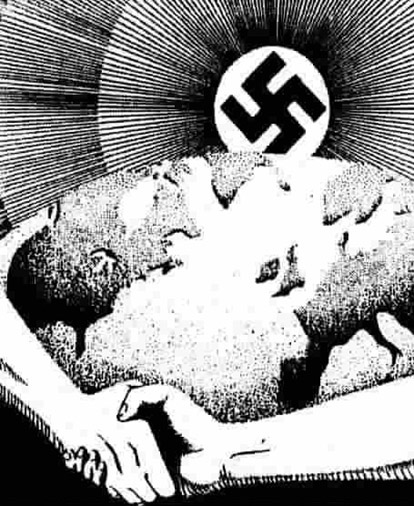



Poster advertising the celebration of Germany's Anschluss with Austria organized by the NSDAP chapter in Argentina
(Landesgruppe Argentinien der NSDAP). It was held in Buenos Aires, April 10, 1938.]
[Source: Life magazine, August 21, 1944, vol. 117, no.8]
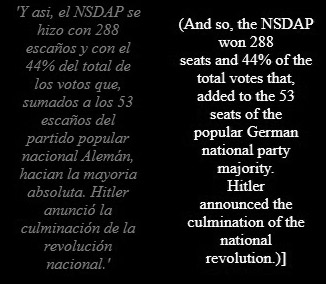
'DAS DEUTSCHE VOLK kann nur leben durch die gemeinsame harmonische Arbeit ALLER (Adolf Hitler)'
which basically means
'THE GERMAN VOLK can only live by the joint harmonious work of us ALL (Adolf Hitler)'.
The bottom says
'Der Auslands Deutschen In Argentinien'
which is
'The Germans living abroad in Argentina'.]
(*You would swear these clips were from Hitler's Germany.
Thanks to the anonymous comrade who put this together!)


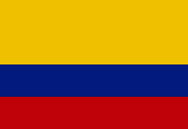



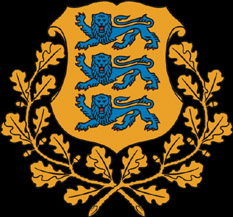
With glad-rejoicing, German soldiers were welcomed as liberators. Should to shoulder with the German Forces, our people began the fight against the retiring enemy.
Today there are 12,600 Estonian volunteers fighting in the ranks of the German armies forming part of the front against Bolshevism.'
-Public statement from 'The National Head of Estonian Autonomy, Dr. Mäe, in replying to the Soviet calumnies [false and defamatory statements made by the Soviets that the Germans have been bad for Estonia],
'For Europe--Against Stalin', quoted from The Star (Guernsey), No. 58, April 30, 1942.
Waffen-Unterscharfuehrer Haralt Nugiseks (April 9, 1944)
SS-Sturmbannfuehrer Alfons Rebane (February 23, 1944)
SS-Obersturmbannfuehrer Haraldt Riipalu (August 23, 1944)
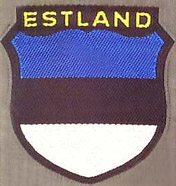
Some of their heroic battles in the end days are like something from a tragic fairytale, the stuff of legend.
Here are members of the Estonian Waffen-SS in 1944 meeting Estonian politician Hjalmar Mäe.]

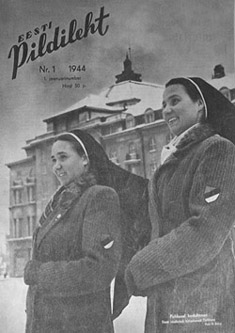
This was a magazine which ran during the short years of Estonian freedom between 1943-44. This is the first issue of 1944.]
The cover shows two Estonian women in traditional dress. The text below says: 'Happy people on the day of freedom'.]


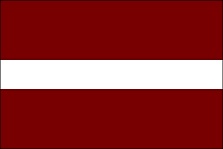
It has been seen that the human liberty promulgated by the Bolshevics is nothing less than downright falsehood and hypocrisy.
In the economic and cultural sphere, too, Bolshevism immediately began its destructive and disruptive activity to bring the Letts down to the same level with the other peoples under Bolshevic rule.
In an incredibly short time almost everything was ruined; the cultural life of the nation, its well-run agriculture and the prosperity which was the result of hard work. Productive farms were cut-up into smaller and smallest holdings.
This was part of a fiendish Bolshevic scheme to force the peasants into so-called 'Kodchose' or 'collective farms.'
The best machines were removed from the factories, savings bank deposits of the workers and other small depositors were nationalized, and so on.
The workers were converted into automatons, slaves without a will, without a thought of their own. The resultant passive resistance, the many acts of sabotage committed in factories and elsewhere,
and finally the abduction of 4,429 workers, provided evidence enough of how 'satisfied' the Letts were with this 'government of the workers and the peasant.'
Worst of all, however, was the degradation and humiliation to which the intellectual classes and the military had been subjected, many of whom had been victimized.
These facts say far more than the Muscovite Jew on the air. Thanks to the sympathetic assistance rendered by the German authorities, economic life is again functioning normally, and culturally the country has already reached the pre-Bolshevic level.'
-Public statement from 'The Chief Administrator for Internal Affairs in Latvia, Genl. Dankers, For Europe--Against Stalin', quoted from The Star (Guernsey), No. 58, April 30, 1942.
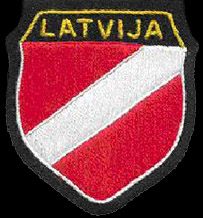
Waffen-Untersturmfuehrer Roberts Ancans (January 25, 1945)
Waffen-Hauptscharfuehrer Zanis Ansons (January 25, 1945)
Waffen-Obersturmbannfuehrer Karlis Aperats (September 21, 1944)
Waffen-Hauptsturmfuehrer Zanis Butkus(September 21, 1944)
SS-Obersturmfuehrer Andrejs Freimanis (May 5, 1945)
Waffen-Obersturmfuehrer Roberts Gaigals (May 5, 1945)
Waffen-Obersturmbannfuehrer Nikoljas Galdins (January 25, 1945)
Waffen-Sturmbannfuehrer Voldermar Reinholds (May 9, 1945)
SS-Unterscharfuehrer Alfreds Riekstins (April 5, 1945)
Waffen-Standartenfuehrer Woldermars Veiss (February 9, 1944)


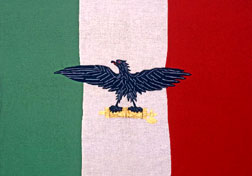





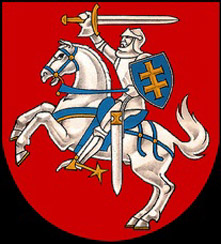
The German Administration has restored their holdings to the peasants and the houses to their legal owners, and is now taking steps to restore the private property abolished by the Bolshevics.
The latter imposed unbearable dues in kind on the peasants, with deliberate intent to ruin them and so drive them into the collective farms.
The German Administration despite the war and prevailing martial law, brings every consideration to bear in the interests of the peasants and grants all manner of alleviations to the Lithuanians so sorely tried by Bolshevic measures.
The Bolshevics threw round about 12,000 wholly innocent Lithuanians into prison for political reasons or because of former anti-Communist feelings, and exiled over 40,000 to Siberia.
Under German Administration even all former Bolshevic functionaries have been set free on the mere promise to abstain from political activity. They are neither persecuted nor deported.'
-The Lithuanian Councillor General, General Kubiliunas, speaking in Kovno, 'For Europe--Against Stalin', quoted from The Star (Guernsey), No. 58, April 30, 1942.


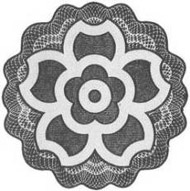
His story was revealed in an article of 'Weekly Korea' on December 6th, 2002. He was captured by American soldiers after D-Day in June 1944. Oddly, through the chaos of war, he served in the Japanese, Russian and German armies!]


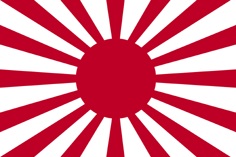
Tomonaga committed suicide in 1945 on another U-boat rather than surrender.]
–Adolf Hitler


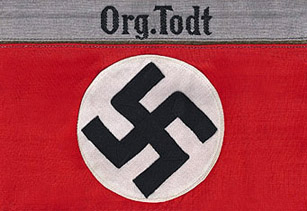
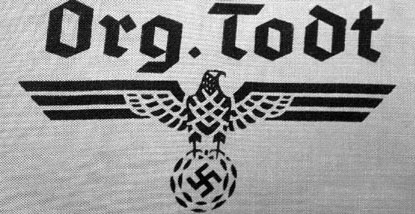


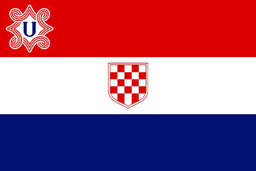
The fighting was extremely bitter, some positions changed hands upwards of six times, and losses were bloody on both sides.
Our troops, particularly the 13th SS Division "Handschar" have fought outstandingly well in the face of a vastly superior foe,
despite two enemy breakthroughs, the main battle line is in our hands.
The fighting continues, one enemy tank has been destroyed.'
--officer from Oberkommando des Heeres (the Supreme High Command of the German Army), April 15, 1945
In spite of the hopelessness of the situation, König personally led eleven of his men in a counterattack and threw the enemy back.
The foe answered with fire of their heavy weapons on the breakthrough point, killing ten of the men and seriously wounding another.
König himself wounded, held the position single-handedly with hand grenades...
He held the enemy at bay long enough for his shattered battalion to consolidate and re-organize (behind him)...'
--The quote speaks of SS-Obersturmführer Hans König, 1/28 SS-Regt, November 20, 1944.


After victory is achieved, a new, important task must be completed -- the implementation of a New Order...
Through the Versailles-Diktat, Europe was thrust into a totally senseless foundation,
and under the name of democracy, Jews and Freemasons played key roles in political and societal life...
It will not be easy to liberate Europe from these enemies, but the SS man...
shall build a better future for Europe'.
--Sturmbannführer Hussein Dzozo

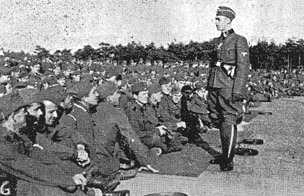
The men have performed deeds that are truly of great bravery.
The camaraderie between Germans and Bosnians in battle is insoluble.'
--Karl-Gustav Sauberzweig, April 16, 1944
I therefore consider it my duty to extend our thanks to the Reichsführer-SS in the names of the division's Imams
as well as in the names of the hundreds of thousands of Bosnia's poor in that I pledge
that we are prepared to lay down our lives in battle for the great leader Adolf Hitler and the New Europe.'
--Hauptsturmführer and Imam Husein Dzozo, in a letter to Reichsführer-SS Heinrich Himmler, thanking him for donations made to Bosnian family members of the troops, for an increase in troop rations and the establishment of an Imam school.
but I haven't the slightest doubt concerning the loyalty of the Bosnians.'
--Heinrich Himmler, referring to communist terrorist Tito's attempt to infiltrate the Bosnians Waffen-SS division. Several of these criminals were rooted out and hung.





-Toshio Shiratori
Berlin, Deutsches Museum. März 1939.
Geöffnet täglich 9-19 Uhr.
Priester Mokuan'
Berlin, Deutsches Museum. March 1939.
Open daily 9 a.m.–7 p.m.
Priest Mokuan)

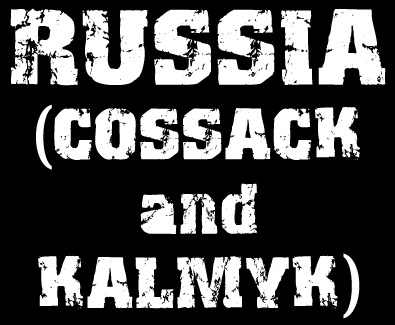
Kuban Cossacks (KB), Terek Cossacks (TB), Sibir Cossacks (NCB) - from the 2nd Siberian Cossack Calvary Regiment.
Bottom row, from left: Don Cossacks (BA), Astrakhanskoje Vojsko - Astrakhan Siberian Host Cossacks (ACB). Click to see printed variations.]
-Signal magazine, English edition.]
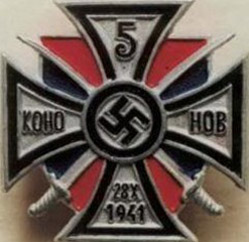

These are the same medal, but made differently because of war time chaos and shortages.]

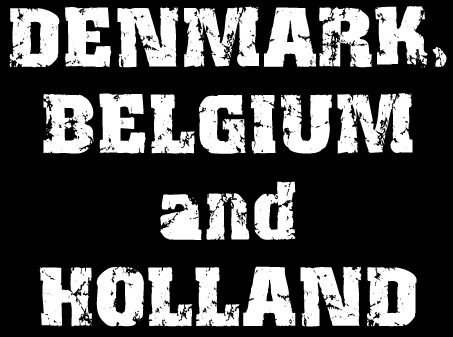

SS-Untersturmfuehrer Søren Kam (February 7, 1945)
SS-Unterscharfuehrer Egon Christophersen (July 11, 1944)
SS-Untersturmfuehrer Léon Gillis (September 30, 1944)
SS-Untersturmfuehrer Jacques Leroy (April 20, 1945)
SS-Sturmmann Remi Schrijnen (September 21, 1944)
SS-Sturmmann Gerardus Mooijman (February 20, 1943)
SS-Unterscharfuehrer Kaspar Sporck (October 23, 1944)
SS-Untersturmführer Joop Havik (May 6, 1945)

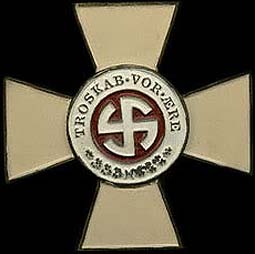
The population hates them more than Aage H. Andersen [editor of anti-Jewish newspaper 'Kamptegnet'] himself could dream of...'
-From a letter Schalburg wrote his wife in August 1941 while serving with Wiking division.



His most famous poem 'Denmark in a thousand years' was almost the Danish national hymn.
His son Helgo Rørdam, after emigrating to Finland, volunteered to fight in the Winter War against the Soviet communists and was killed in action.
In 1941 he published the poem 'Then came the day that we have long awaited'. The poem praised Adolf Hitler's trials to destroy bolshevism.
In 1942 he wrote a tribute to the Waffen-SS Obersturmbannführer Christian Frederik von Schalburg, a martyr whom fell on the eastern front fighting communism.]



The picture was taken for the DNSAP's newspaper 'Fatherland', issue June 19, 1941.]


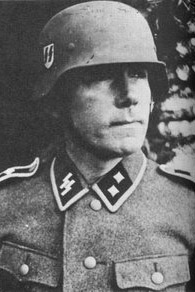

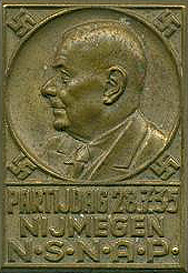





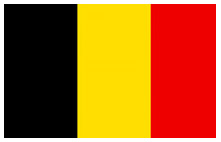
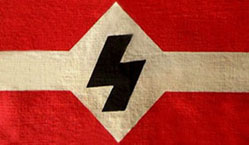




He was a fervent National Socialist and published a pro-Axis newspaper in the late 1930s called The New Mercury.
He is perhaps best known for his marriage to Savitri Devi in 1940 (6-9-1940) in order to protect her from deportation and internment by the British who occupied India at that time.
When The New Mercury was banned by the British government he began publishing another newspaper called The Eastern Economist, which was in collaboration with the Japanese.
Mukherji was instrumental in connecting Subhas Chandra Bose with the Japanese. This introduction led Bose to form the Indian National Army.
After the war he published several of Savitri Devi's most venerated books about National Socialism and Adolf Hitler.]


-Savitri Devi

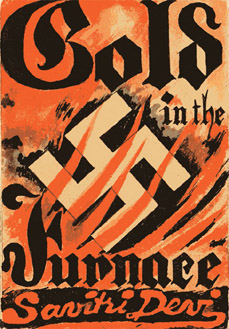



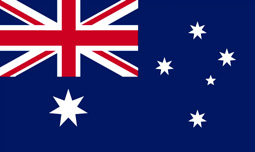

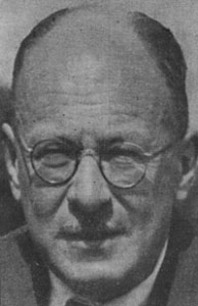
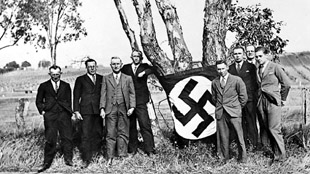


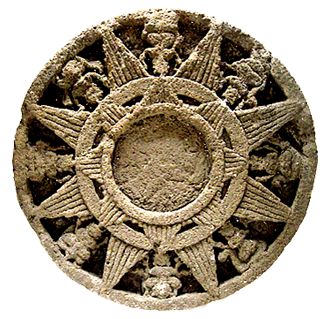


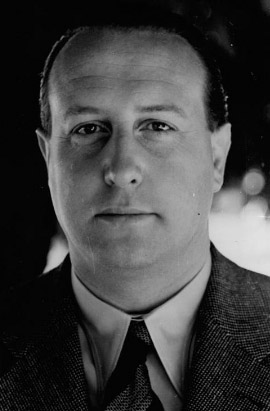
Note the homemade flag!]

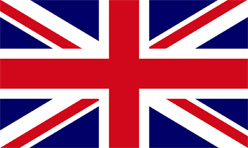

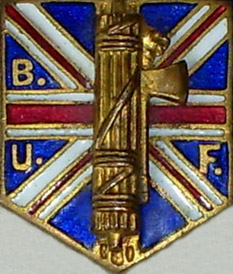
-Saying of the British Fascists

It is a strange thing that a great country should allow both the economic and the political freedom of so many of its citizens to be at the mercy of an organized minority who owe allegiance, and who admit they owe it, not primarily to Britain, but to their kinsmen beyond our borders, and whose capacity for mischief is exceeded only by their desire to do it.'
-Sir Oswald Mosley
Quite a few notable personalities of Britain joined him, among them:
Major General J.F.C. Fuller, historian; Francis Yeats-Brown, the author; Lord Rothermere, the publisher of popular newspaper the Daily Mail; Sir William Morris, owner of Morris Motors; Sir Henry Deterding, chairman of the Dutch Oil Company; Viscount Lymington; Admiral Sir Barry Domville; B. Philby, a famous explorer; the Earl of Glasgow and Walter Runciman, both brothers-in-law of Sir Thomas Inskip the Minster of Defense.
Not to mention the great William Joyce, who became his propagandist.
Mosley met with various heads of state, including Adolf Hitler, who along with Joseph Goebbels attended Mosley's wedding held in Berlin.
It is said that King Edward the VIII was a large financial supporter of the British Union of Fascists.
Mosley and over one thousand others were imprisoned during WW2 for no other crime than their beliefs. They were detained under 'Defense Regulation 18B'.
-Oswald Mosley, October 1934, at Albert Hall
-Oswald Mosley
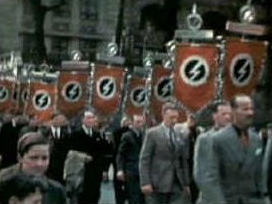

For what you ask?
For a radio program! After he was murdered by his enemies by hanging he was buried within the Wandsworth Prison walls, in an unmarked grave, and was allowed no mourners. His lifeless body was dumped in a hole in the middle of the night, without words or ceremony, like a piece of garbage, and thrown on top of the remains of another man, a murderer named Robert Blaine who had been hanged five days earlier!]

[It begins with a Germany Calling recording.
At 11:55 another recording titled 'New York Times Reports Exeter [British Cruiser] Damaged'.
At 12:29 'Denmark and Norway Invaded' begins.
At 12:34 begins 'Russo/Finnish War Concluded'.
At 34:39 begins 'The Fall of France'.
At 48:31 begins 'UK Invasion Looms'.
At 1:02:21 begins 'Balkan Intention Denied'.
At 1:03:08 begins 'William Joyce's Last Broadcast'.]


Without women I could not have got a quarter of the way.'


'...the most wonderful and beautiful [day] of my life. I am so happy that I wouldn't mind a bit, dying.
I'd suppose I am the luckiest girl in the world. For me he is the greatest man of all time.'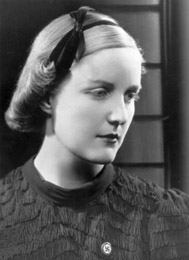



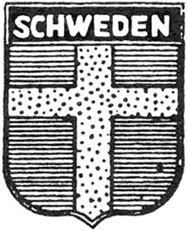


'Gösta Pehrsson was a good comrade. Loyal, honest, brave. He had great military knowledge and skills. He helped everyone out of trouble, even if he had to risk his life to do it. Every comrade's life was more valuable to him than his own life. He took care of his men and company. He was caring, friendly and warm-hearted.'
'In the Preekuln area the 3rd/SS Panzer Reconnaissance Unit 11 was not successful. This place was called Trekni. Pehrsson received an order for the 3rd company directly from Brigadeführer Ziegler: 'Attack! Conquer one strategically important point and keep it until the last men are alive!' After the attack, once we had driven the enemies away from the upland and occupied their bunkers, only a few men from Pehrsson's company had remained. It was terrible bloodshed, one-on-one. The Russians knew what was at stake and tried to use all possible means to retake the upland. For four days we tried to stay strong and beat off the enemy's attacks. On the fifth day we had to retreat. Pehrsson's command point was about 100 meters behind the bunker line. I'll never forget the moment he saw us. He yelled: 'Cowards, go back!', although he knew we had no other choice. And then he led his MG to attack and we followed him. We surprised the Russians, who were certain of their win, with 12 men. Russians had not seen it coming and we managed to capture more than 100 enemy's men.'
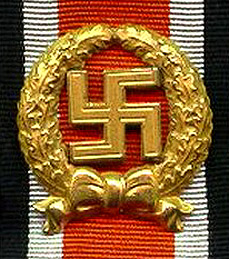

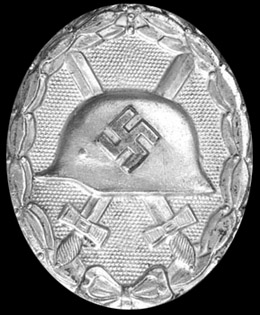



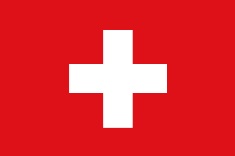
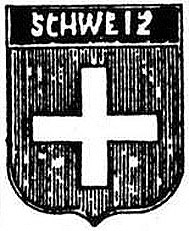
'
Die Schweiz als Nationalitätenstaat kann nur bestehen, wenn die völkische Eigenart der vier arisch = christlichen Volksstämme als Grundlage des Staatspolitisch neutralen Gesamtschweizerstaates erkannt wird, denn ein Staat hat nur Dauer und Berechtigung zum Leben, sofern er auf dem völkischen Bewusztsein ruht. Das ziel jeder Erneuerungsbewegung kann nur sein, dem Staate einen blut = und seelenvollen Inhalt zu geben; dann können auch seine kulturen und seine Wirtschaft leben.'
Which basically translates as:
'Switzerland can only exist as an national state if the peoples' individuality of the four Aryan Christian tribes is recognized as the basis of the state-politically neutral and completely Swiss state, because a state can only have duration and justification for life, if it rests on the national consciousness. The goal of any renewal movement can only be to give the state blood and soulful content; then its culture and economy can live.'
Click to see more.]


basically says:
'The Confederate - Battle Paper of the National Socialist Confederates, publisher Theodor Fischer, No. 12 of 15, June 1933'.
To quote an article from The Confederate:
'For the eroticism of the Jew is monstrous, and he uses it, on the basis of his national Talmudic teachings, as a means of combating the non-Jewish peoples, spoiling them by mixing their blood... The attitude of the Jew toward the Aryan girl is completely different from that of his fellow race. But this upholding of the Jewish woman as well as his Talmudic laws by no means prevent him from entering countless love adventures outside of marriage... The Talmud says the following to the Jew: "The Jews alone are called men, but the Gentiles are not called men, but cattle." (Baba bathra 114b)... But you Swiss girl, it is said, there is no greater sin than to be disgraced by a Jew, because that is a sin against the blood.']

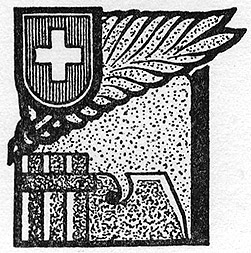
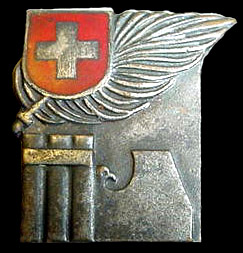






[Source: Kulczycki, John J. (March 7, 2016). Belonging to the Nation. Harvard University Press. ISBN 9780674969537.]
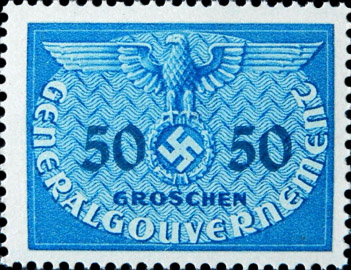
It says that American authorities after the war found a secret memorial to Adolf Hitler and Heinrich Himmler in one of Frankfurt's bunkers.
As Wehrmacht auxiliaries and laborers in the German arms industry, many Poles played their part...'
-(c)2007 Ch. Links Verlag, Berlin - The Unknown Eastern Front - The Wehrmacht and Hitler's Foreign Soldiers, Rolf-Dieter Müller, page 186/187
-The Siege of Budapest, (c)2005, Krisztián Ungváry, pg. 75
'The diplomats were followed by a great crowd of Romanian and Polish students in national dress, carrying icons and banners. Then, with a small break, came the columns of the Iron Guard. At the head marched Codreanu, dressed like the others in green shirt and military uniform but wearing a long military great coat. Around him, in their first public demonstration, was gathered the Legion of Death, the special armed militias raised to protect the whole movement. Behind marched row upon row of green-shirted Iron Guards from every region in the country. The people lining the streets stood in silence, most with their arms raised in the fascist salute. The only sound was the squeak and thud as the legionaries' boots hit the pavement in perfect unison. A friendly bystander commented later that it was as though 'all of Romania was taking Holy Communion with the Iron Guard.'
-Fighting for France - International Volunteers in Nationalist Spain during the Spanish Civil War, by Judith Keene, Bloomsbury Academic, (c)2007
--John Stieber, Against the Odds - Survival on the Russian Front - 1944 - 1945, ©1995/2016, pg. 180